Colmar is a must-see destination in Alsace. Situated between Strasbourg and Mulhouse, the Alsace wine capital is an excellent base for exploring the surrounding region. With wine villages, medieval castles, great wines, and hearty gastronomy, the area around Colmar is worth a visit. Discover in this article 20 must-see places around Colmar.
- 🇫🇷 Read this article in French / Lisez cet article en français
- 🇩🇪 Read this article in German / Lesen Sie diesen Artikel auf Deutsch
20 most beautiful places to discover around Colmar
Writing this article is easy: I drew a circle with a 15 km radius around Colmar. The only problem is the number of sites to reference, as you have to choose among the hundreds of existing sights within a 15 km radius of the town. To avoid giving you an encyclopaedia (!), I have decided to limit these sites to 20.
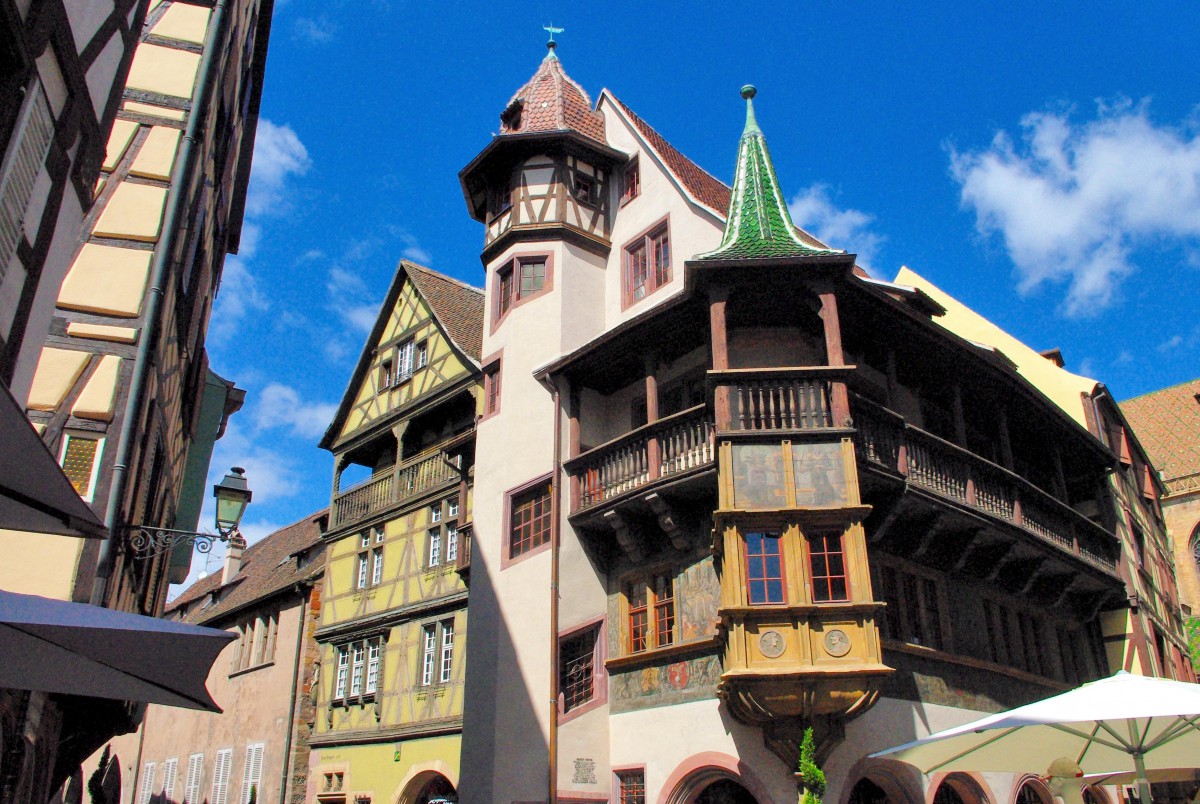
To take the time to discover all these 20 sites around Colmar, you will need several days, if not a good week. My favourite season is the beginning of autumn, when the grape harvest ends, and the vineyards are dressed in gold and orange. In all seasons, the spectacle of the hillsides of the Alsace vineyard bordering the Rhine plain is one of the most beautiful in France.
The microclimate due to the foehn effect explains the beauty of the landscapes 15 km around Colmar. Indeed, the precipitations coming from the west, blocked by the Vosges mountains, spare the Colmar region. It is therefore not surprising to learn that this pretty corner of Alsace is one of the driest places… in France!
Let’s start the exploration of the region around Colmar by the town itself!
Colmar
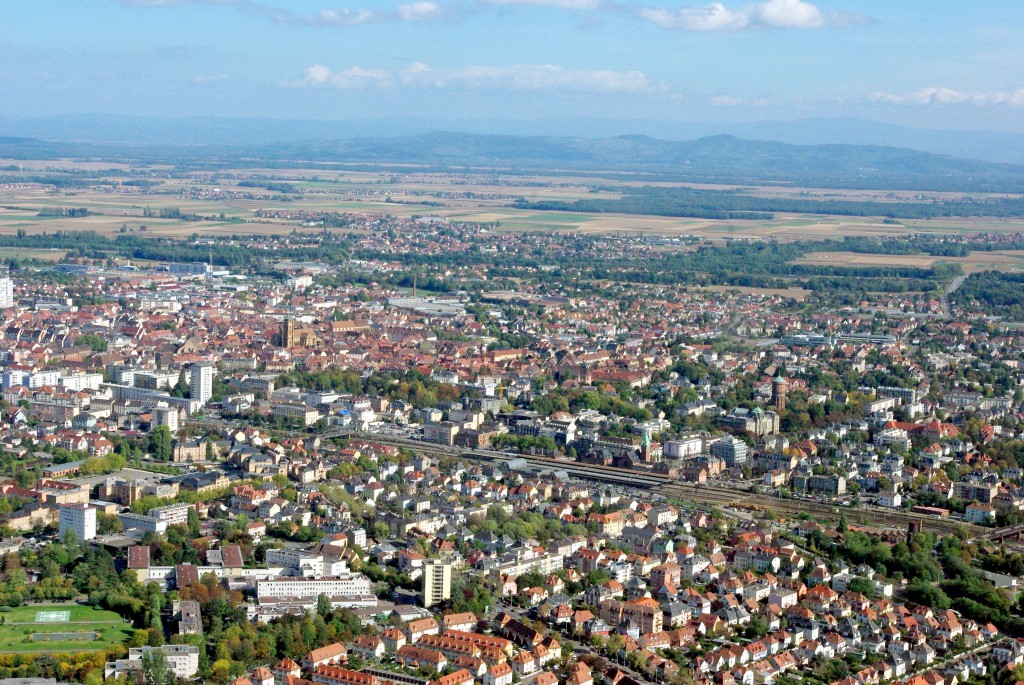
Do we still need to introduce you to Colmar?
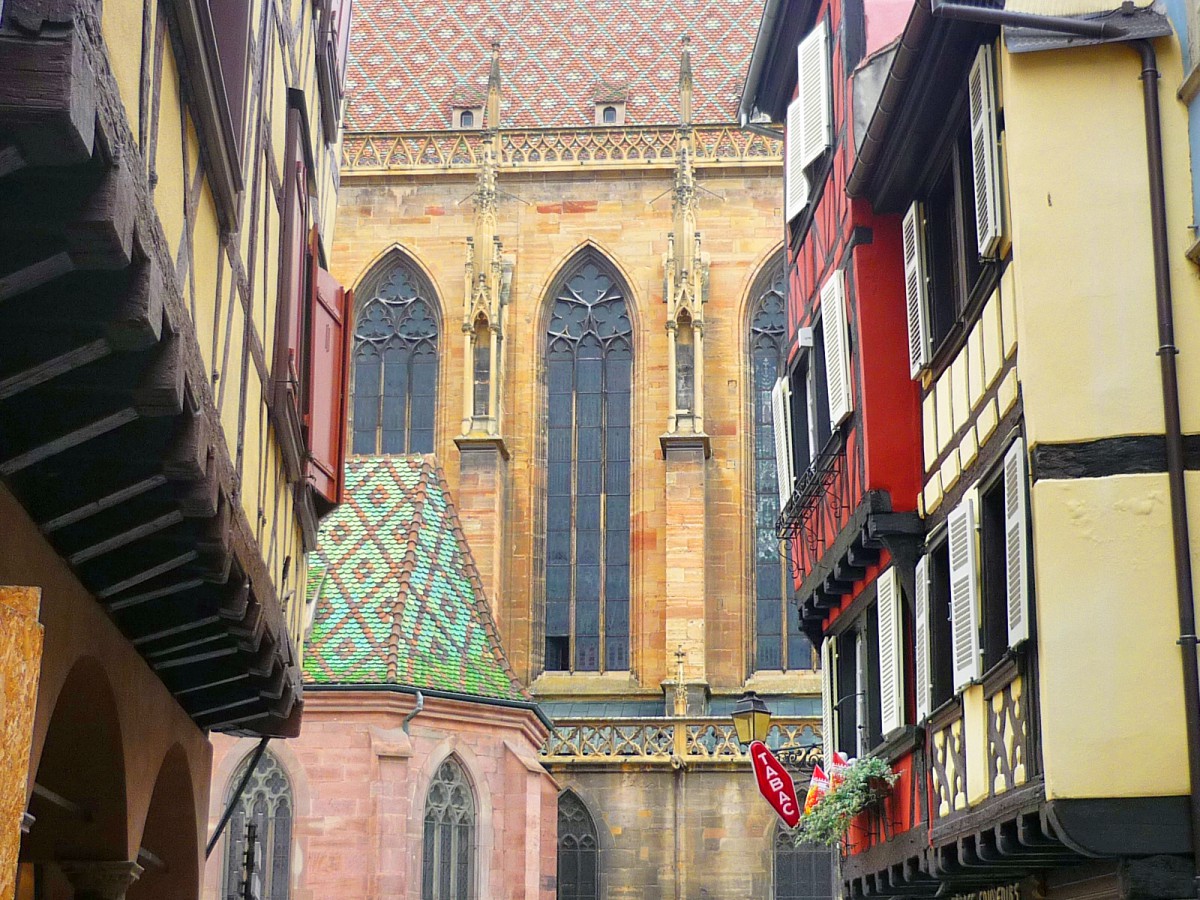
Colmar is a wonder for those who appreciate half-timbered houses, museums and Alsatian gastronomy. My favourite city areas include the Rue des Marchands, the Tanners’ district and the Petite-Venise.
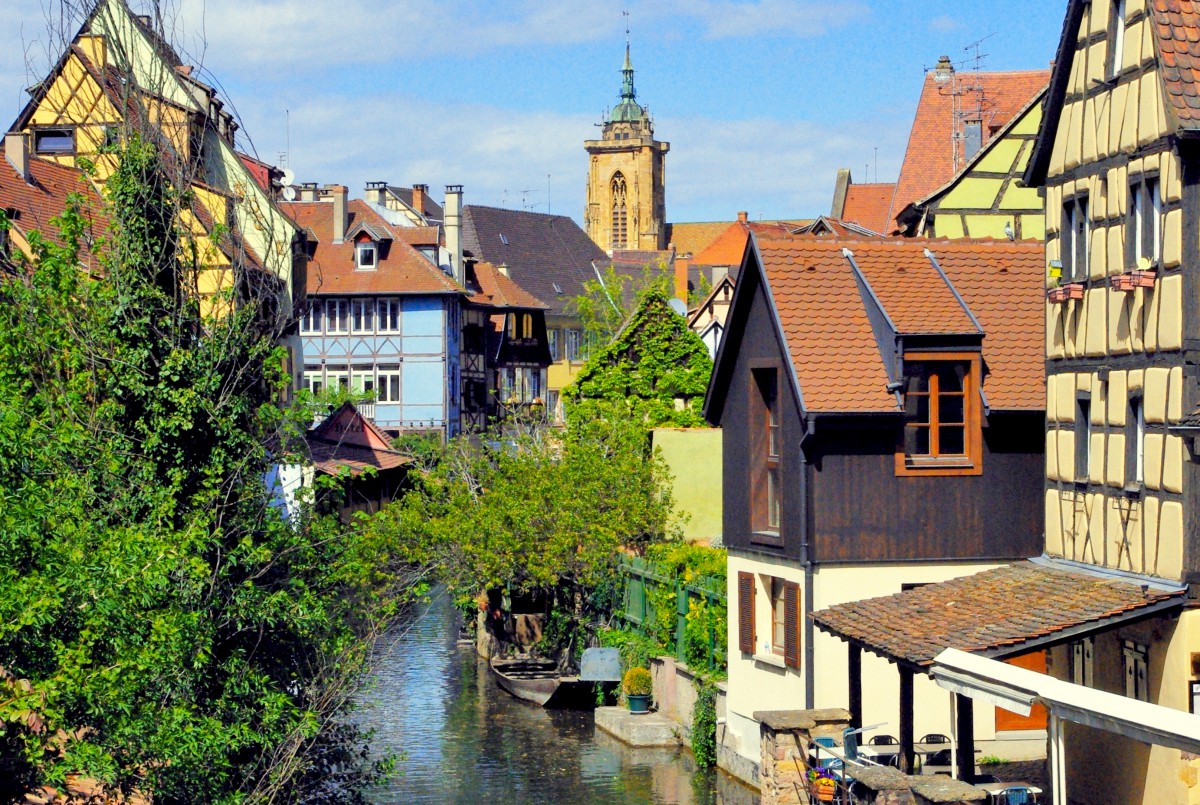
This medium-sized town has one of France’s most beautiful Fine Arts museums: the Unterlinden Museum! Organised around a medieval cloister, the museum exhibits magnificent collections, the treasure of which is the famous Issenheim altarpiece.
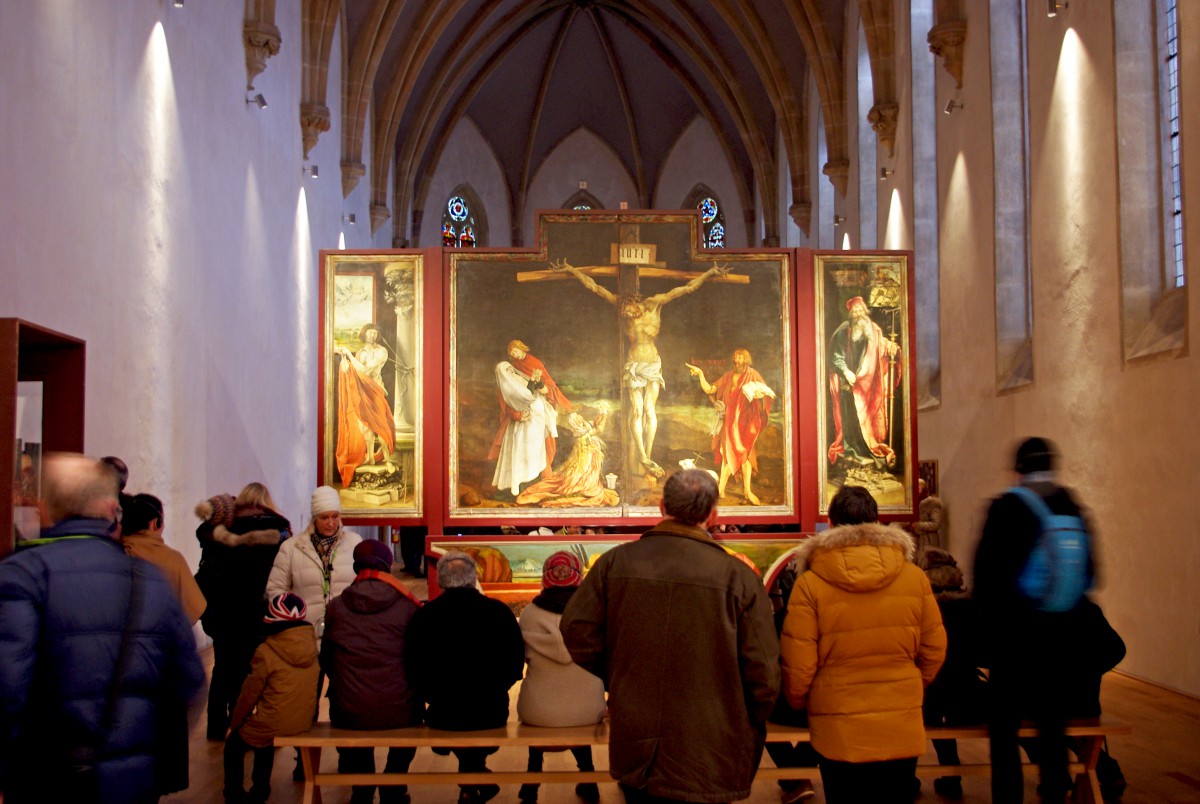
Rouffach

The south of Colmar takes you to a region that is not the most touristy (apart from Eguisheim). You will discover some charming and less frequented places.
About 15 km by road is the small town of Rouffach. Ideally located on the edge of the sub-Vosgian hills covered with the Grand-Cru Vorbourg vineyards, Rouffach reveals itself along pretty streets lined with beautiful bourgeois residences.
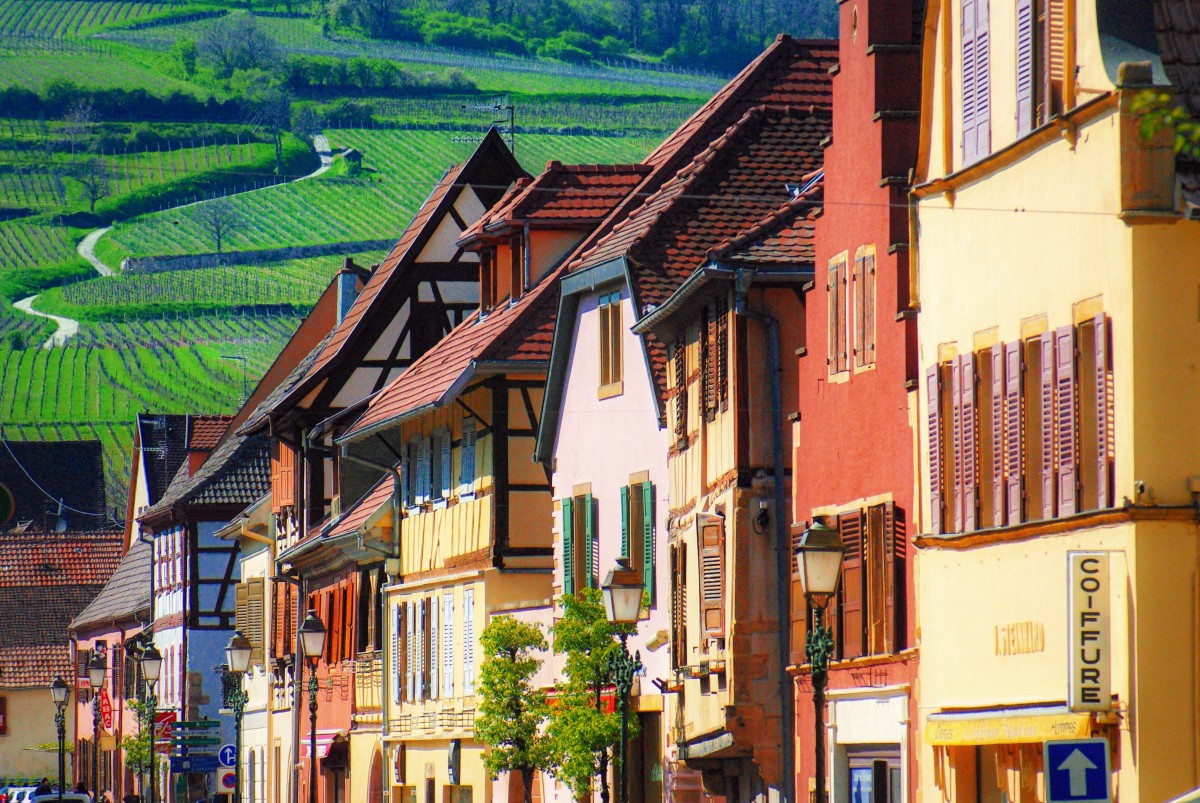
This historical and architectural heritage finds its apogee in the Notre-Dame de l’Assomption church. This jewel of Romanesque and Gothic art was built in yellow sandstone in the 13th century. A must-see during a visit: the circuit of the ramparts.
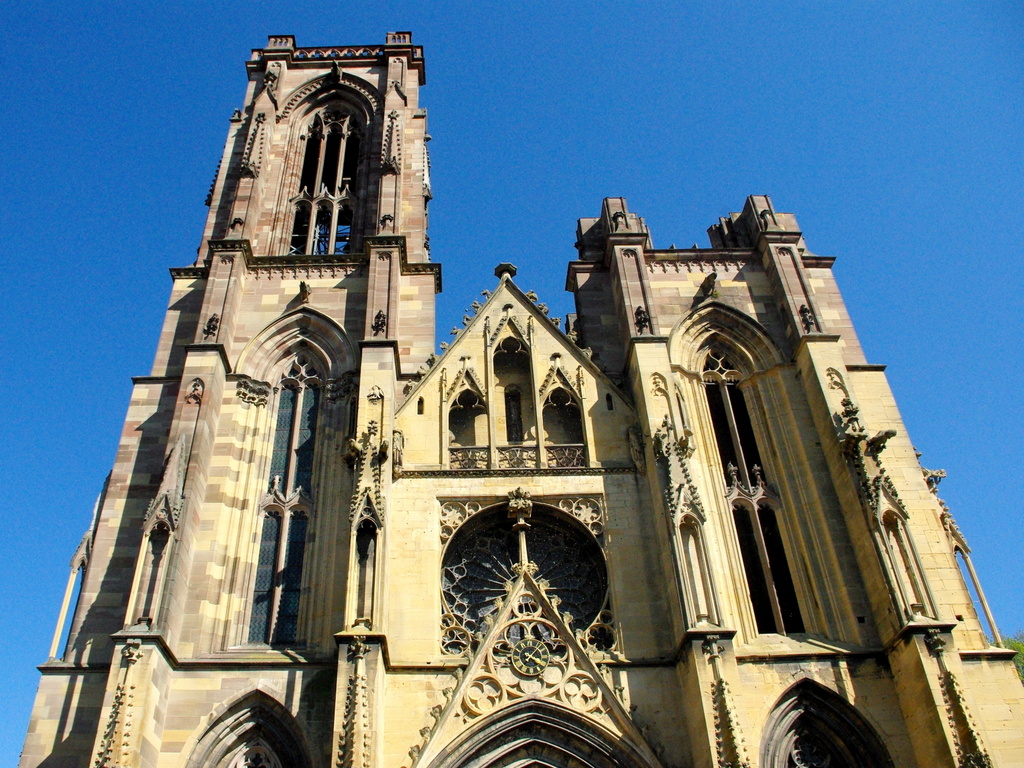
Gueberschwihr
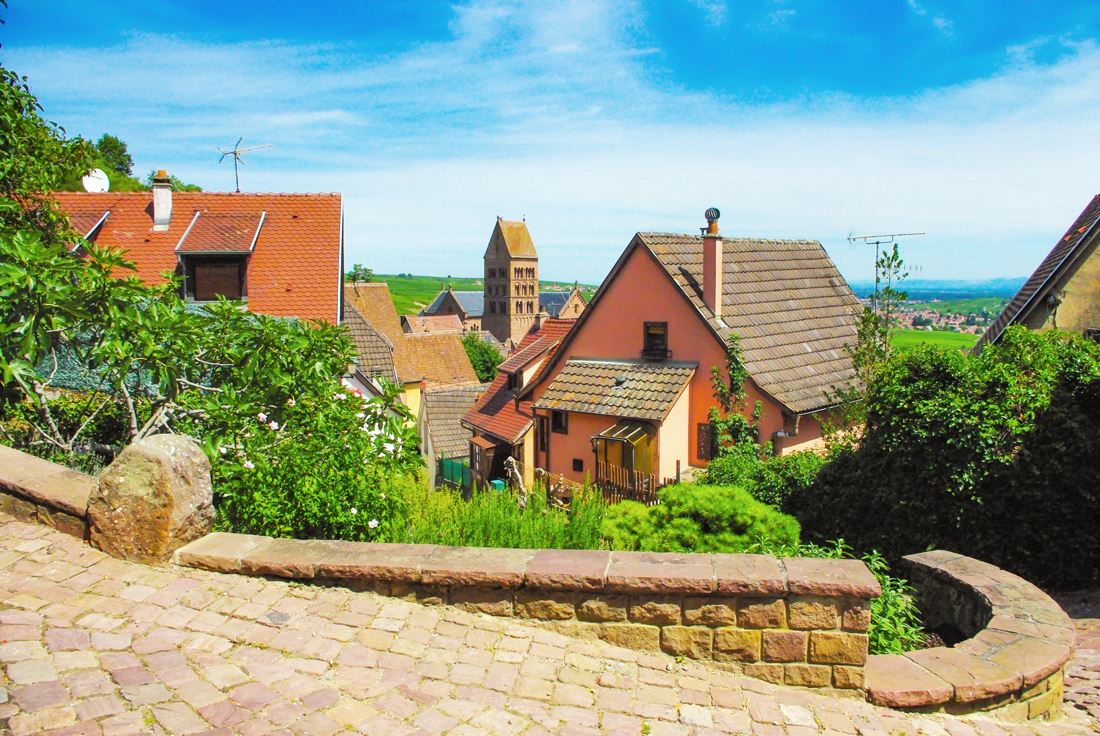
How many times have I passed this village in transit on the D83 between the A36 and Colmar… without ever stopping! Then one day, I left the road to visit Gueberschwihr. And what a nice surprise. Far from the tourist agitation of the heart of the Alsatian vineyard, Gueberschwihr is one of these typical Alsatian villages that has managed to keep its tranquillity.
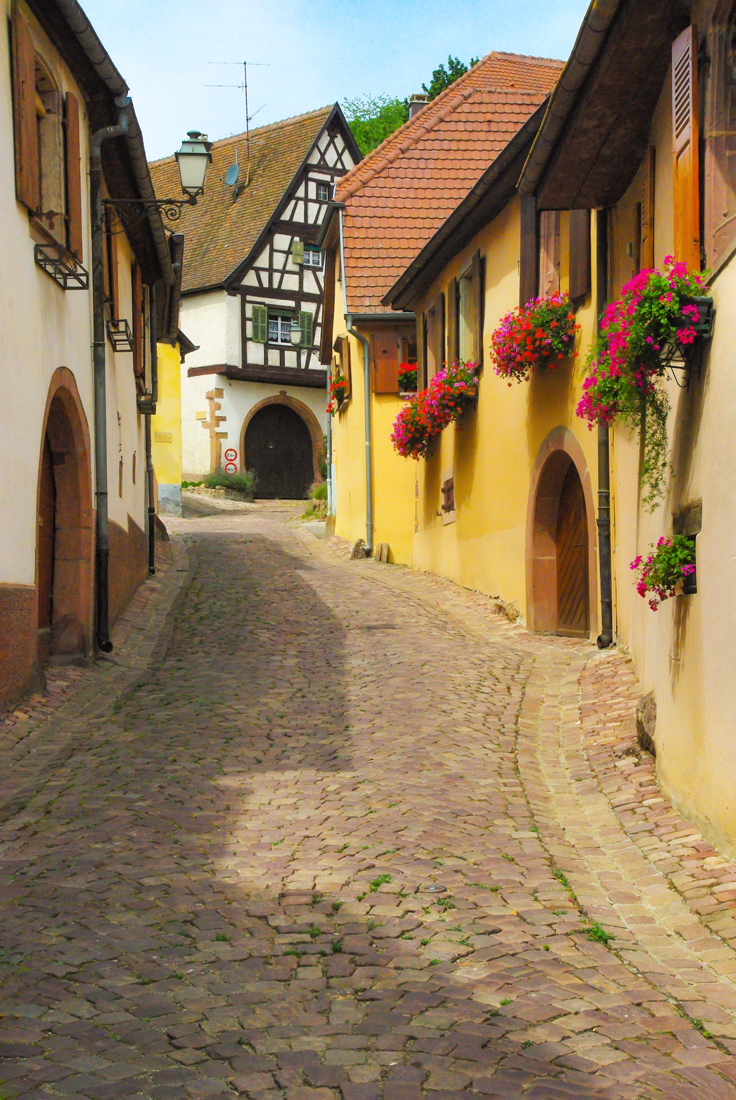
Its Romanesque church Saint-Pantaléon is quickly spotted in the centre of the village with its magnificent 12th-century bell tower. The architectural heritage of the village is somewhat surprising. 78 monuments or houses are listed in the inventory of cultural heritage.
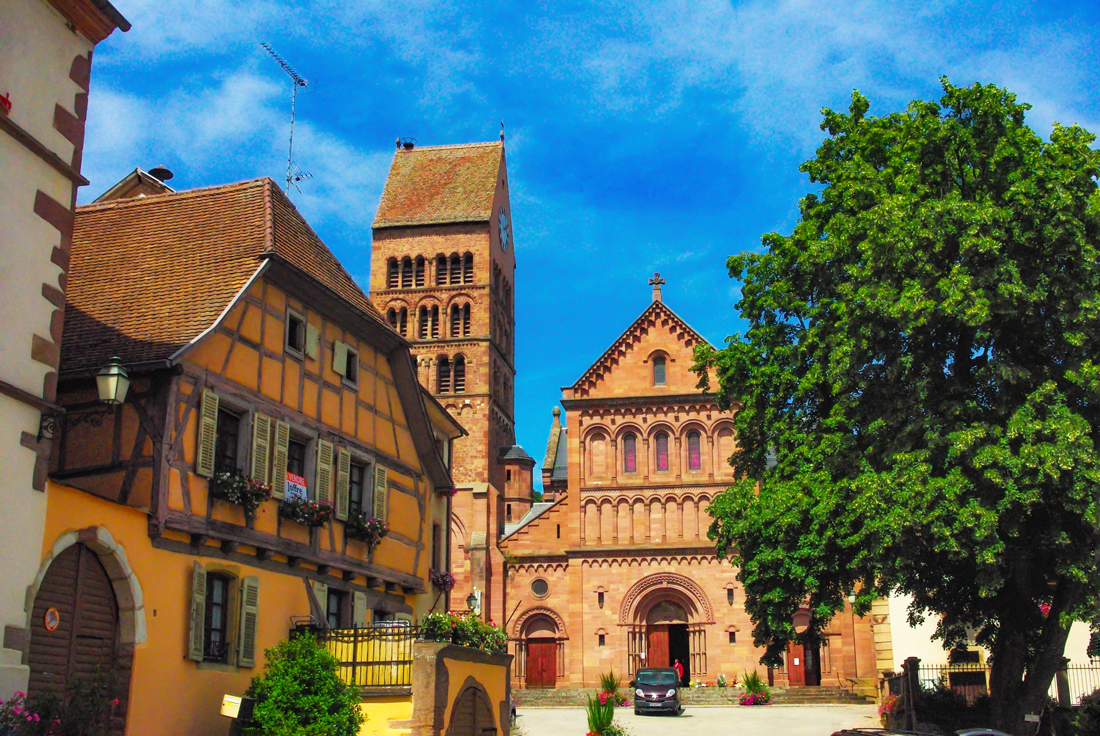
Take time along the streets to admire the houses built in the 16th and 17th centuries.
For wine lovers, you should know that the vineyard of Gueberschwihr includes the Alsace Grand Cru Goldert.
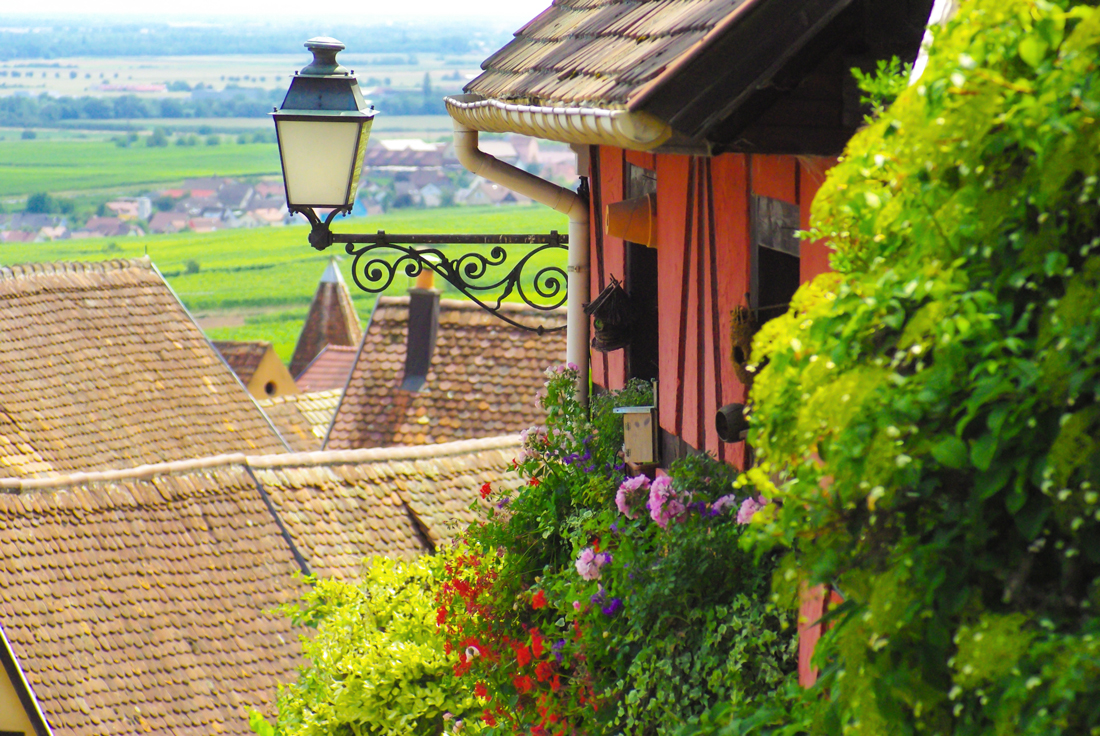
Eguisheim

Eguisheim is a small village a few kilometres from Colmar that accumulates superlatives. As a major tourist destination in Alsace, a visit to Eguisheim is a must! Think about it:
- In 2003, Eguisheim was awarded the exclusive label of the Most Beautiful Villages in France.
- In 2006, the village won the gold medal of the Entente Florale. This is a prestigious European competition for towns and villages in bloom.
- Then, in 2013, Eguisheim became the favourite village of the French viewers of the France 2 TV show, succeeding Saint-Cirq-Lapopie.
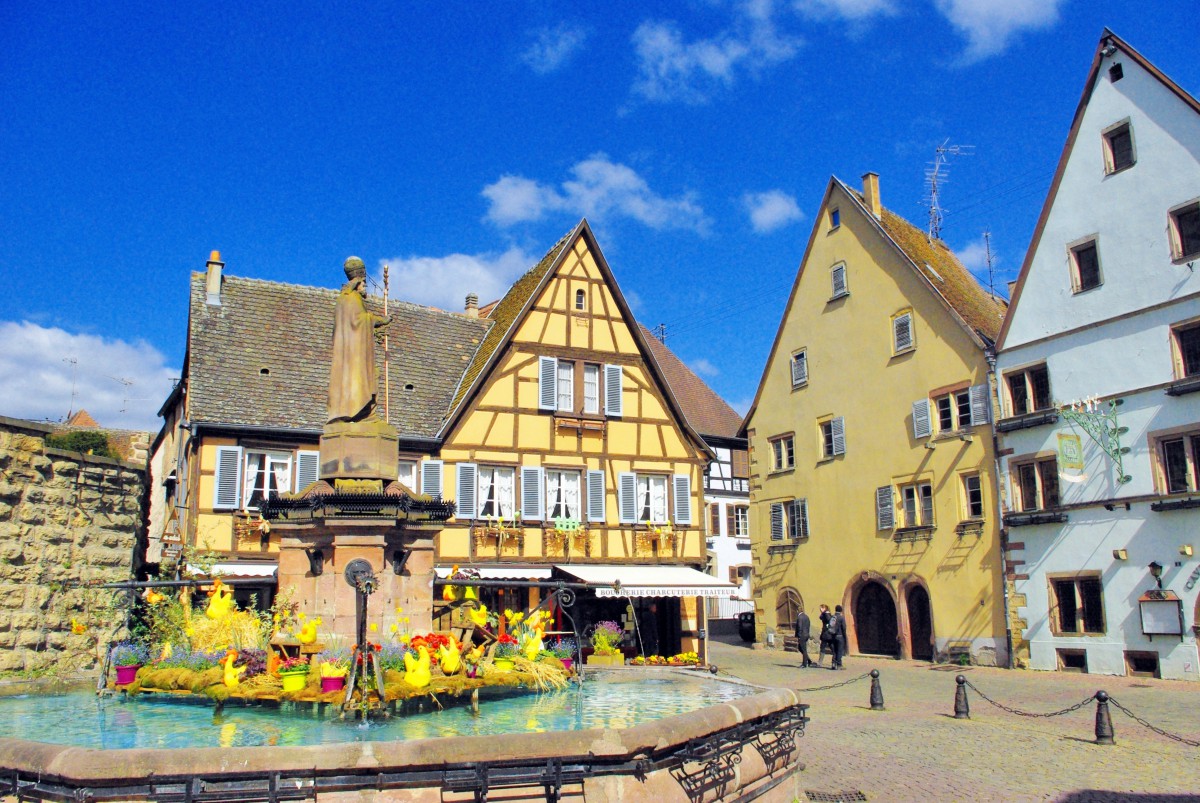
Eguisheim is a “round” village. That is to say that its streets form a concentric plan centred on the castle, the chapel and the Saint-Léon fountain. Although the village is not large, it has many winegrowers’ houses and beautiful half-timbered houses from the Renaissance. I recommend you follow the ramparts walk (along the Rue des Remparts Nord and Rue des Remparts Sud).
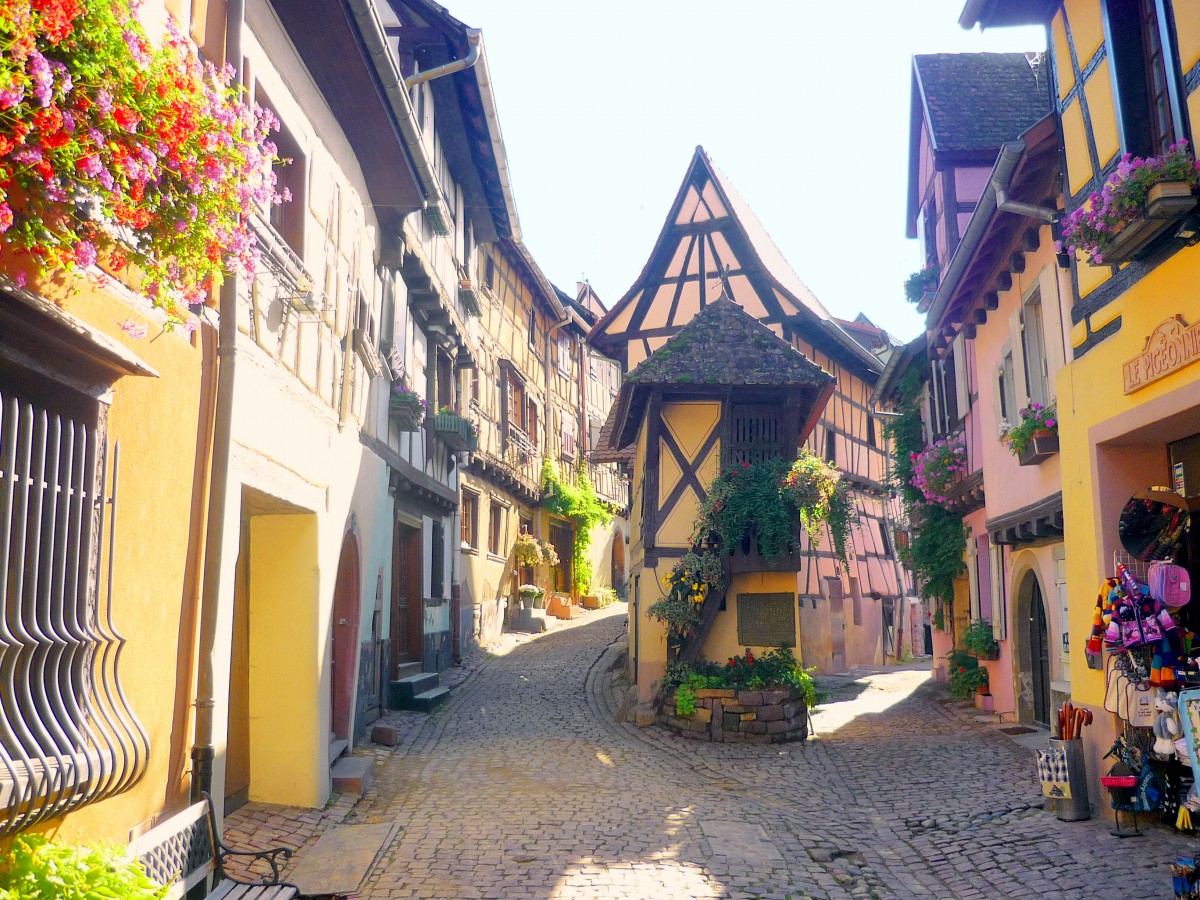
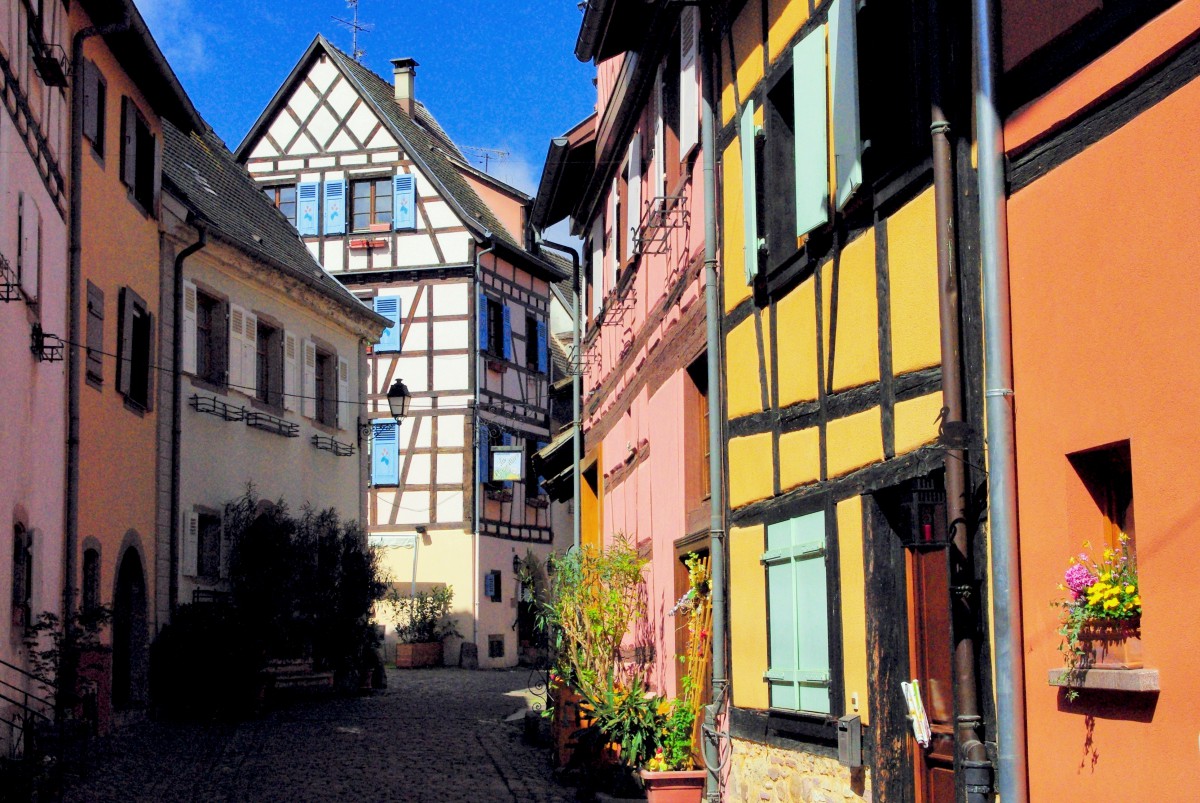
If you have time, climb the three castles of Eguisheim, located next to each other at the top of a sub-Vosgian hill. They are called Dagsbourg, Wahlenbourg and Weckmund.
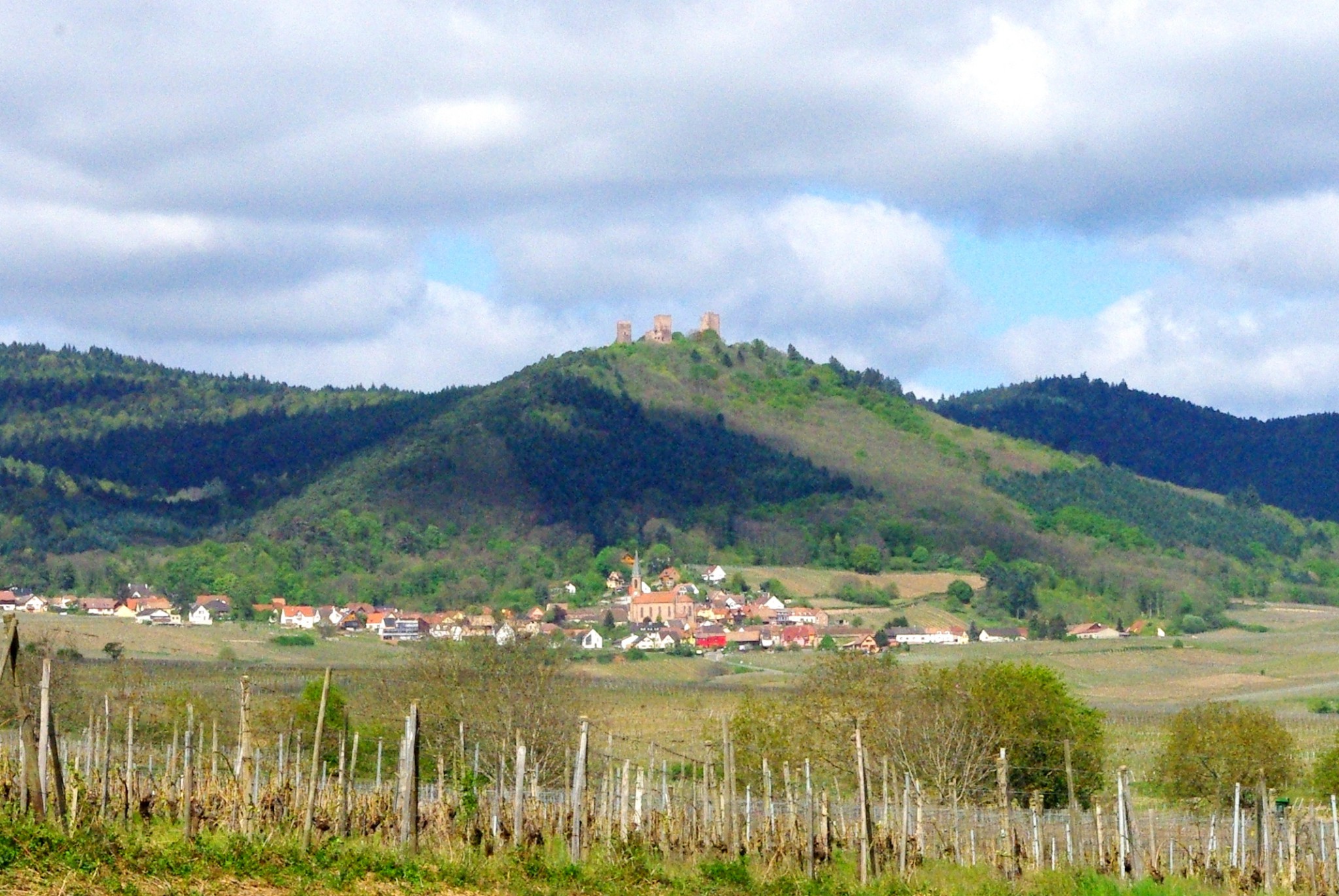
On your way there, you will cross the village of Husseren, the highest point of the Alsace Wine Route. You will discover the Eguisheim vineyard. The hills are not steep and well exposed to the sun. The vineyard produces the Alsace Grands Crus Eichberg and Pfersigberg.

The Hohlandsbourg castle
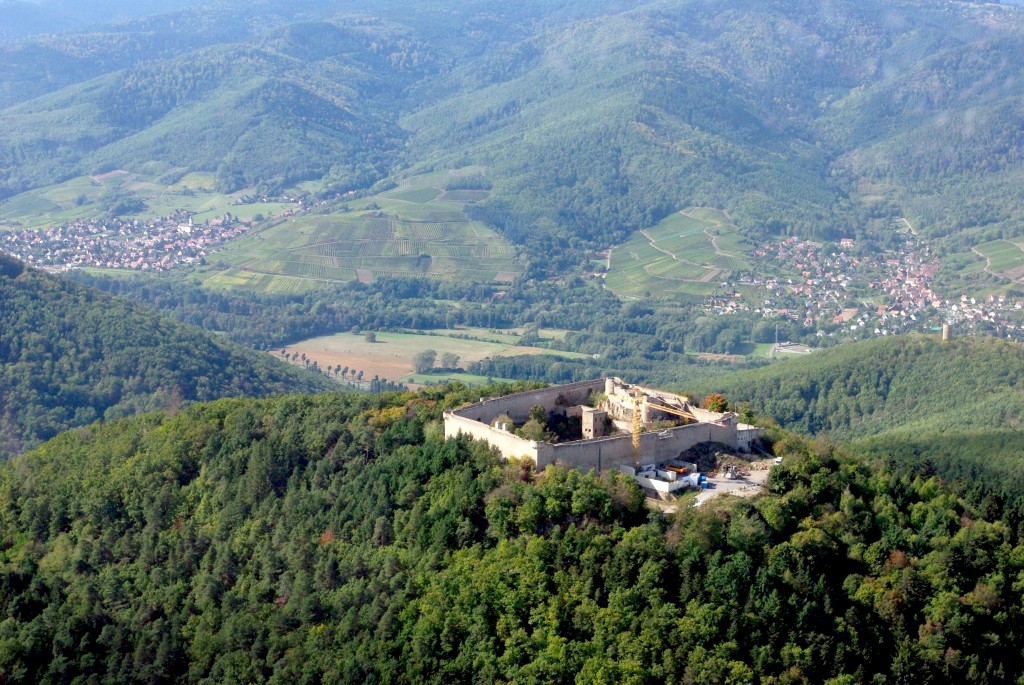
Along with the Haut-Kœnigsbourg, the Hohlandsbourg Castle is one of the most important castles around Colmar. It is also a major tourist destination within 15 km of the town. This historical and cultural site was restored in the 1990s by the Conseil Général du Haut-Rhin.

The castle is open from Easter to November 11th. You will discover an exceptional panorama of the Colmar region. And you will understand the strategic importance of the fortress, which, in the Middle Ages, was used to watch over Colmar. This did not irritate the Colmar burghers who revolted in the 13th century. They went up to the Hohlandsbourg and set it on fire. The castle then came under the control of the Habsburgs. In 1637, in the middle of the Thirty Years’ War, the fortress was destroyed by the French, who feared that the Austrians would occupy it.
Turckheim
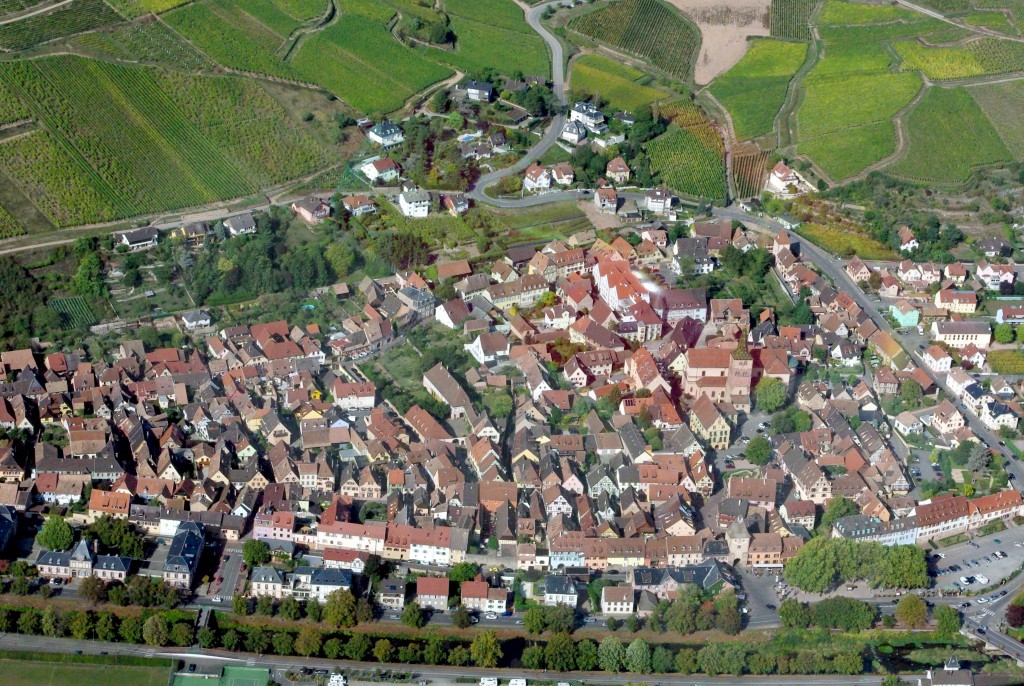
To the west of Colmar, the Munster valley opens up and cuts its way through the natural wall of the Vosges. Turckheim and Niedermorschwihr are the most visited places. Both are located at the foot of the mountain on which the Trois-Epis resort extends.
Like me, you will be seduced by the small pleasant town of Turckheim. It is the archetype of the Alsatian village. Fortified gates, vestiges of medieval ramparts, richly ornate half-timbered houses decked with flowers, storks’ nests on the chimneys, Renaissance fountains, and Gothic churches with glazed tiles, all dominated by the vineyards.
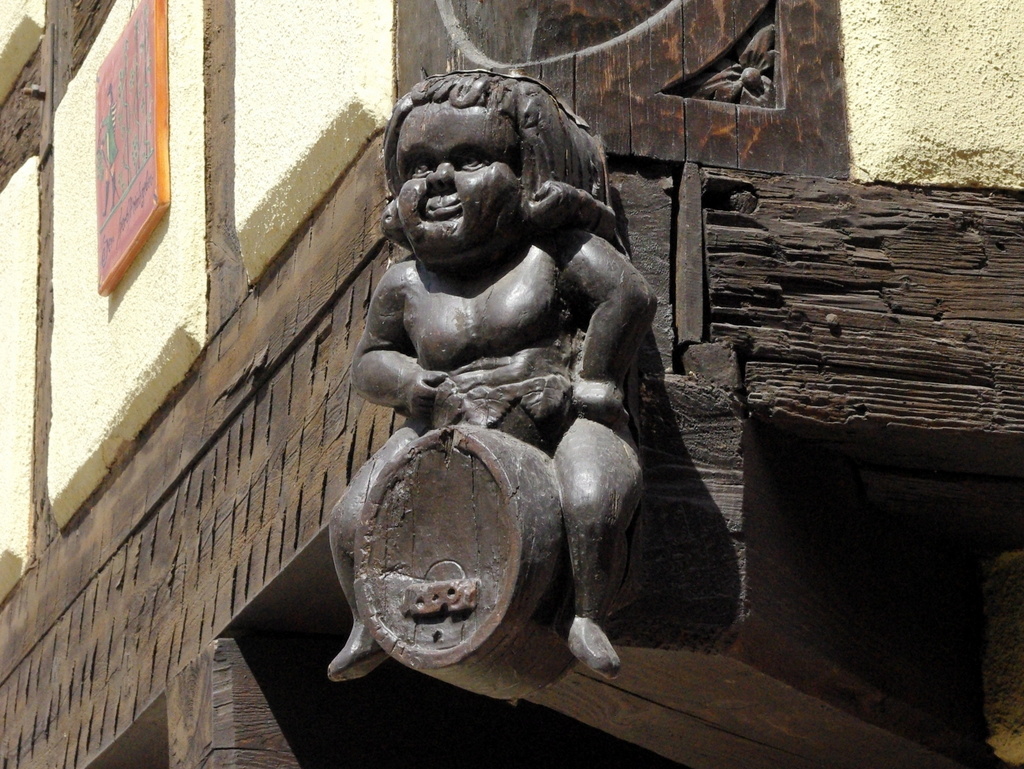
Turckheim was part of the Decapolis, a powerful alliance of prosperous Alsatian cities in the Middle Ages. This privilege ended with the treaty of Nijmegen in 1679. For the record, Turckheim (like other towns of the Decapolis) refused to swear allegiance to the King of France when France annexed the town in 1648.
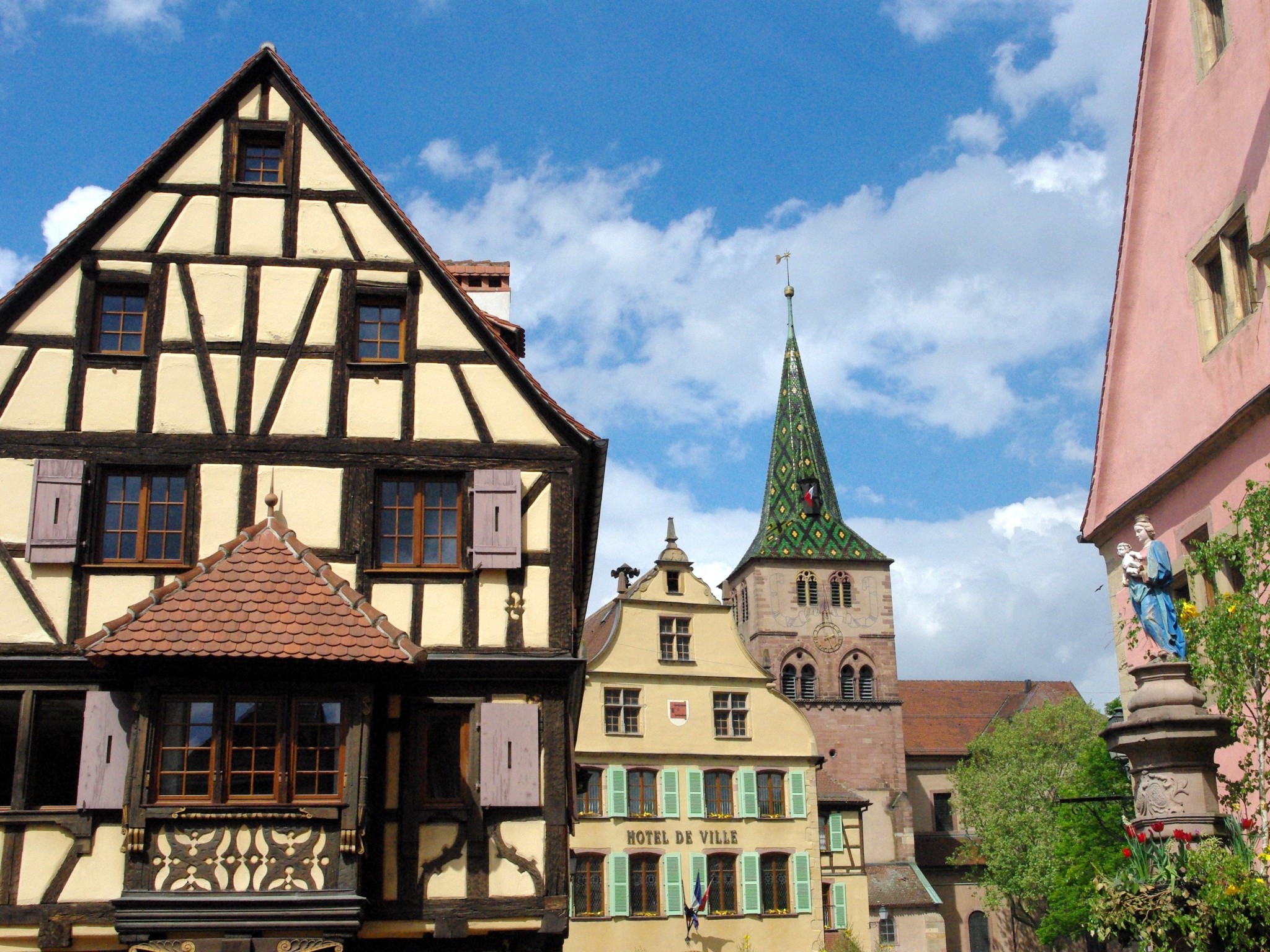
Some traditions have been maintained in Turckheim, such as that of the night watchman who, every summer night, makes his rounds, dressed in his houppelande and carrying a halberd and a lamp. The night watchman of Turckheim refers to an old tradition from the 13th century. His role was to watch over the number one danger of medieval towns and villages: fires.
Niedermorschwihr
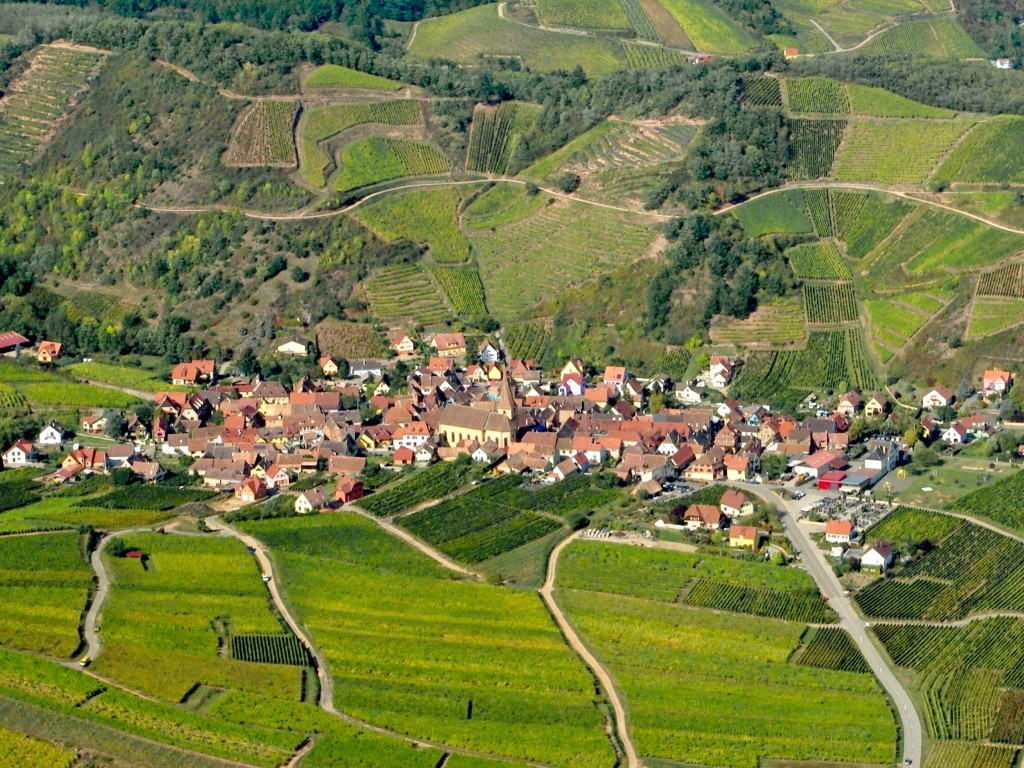
From Turckheim, the Alsace Wine Route winds halfway up the vine-covered hillsides to Niedermorschwihr. This small village, located away from the main roads, is one of the most charming on the tourist route.
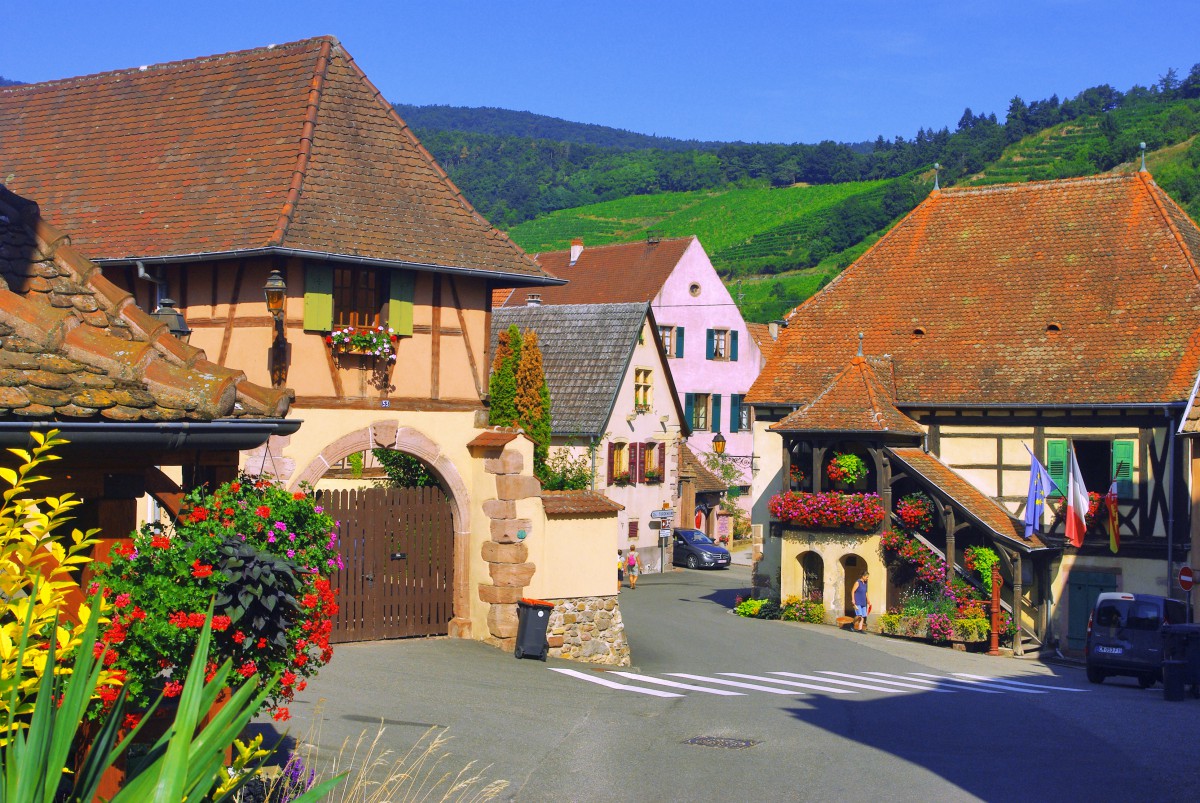
Beautiful half-timbered houses are full of colour and flowers. Refreshing fountains. A small picturesque town hall. And a church with a unique feature in France (and not very frequent in France) is a twisted bell tower. Dating from the 13th century, the octagonal spire is twisted from right to left by 45°. The spire is covered with glazed tiles.
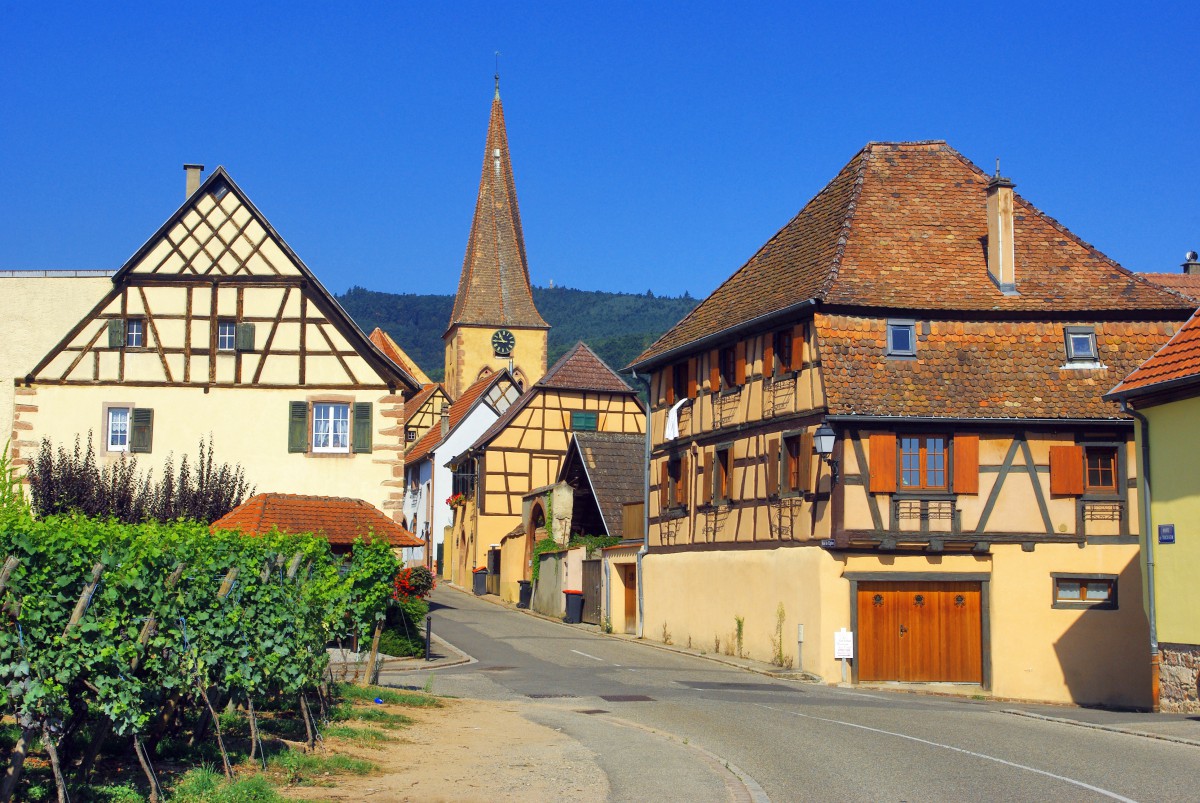
Before leaving the village, let’s have a little guess. Do you know what the inhabitants of Niedermorschwihr are called? The Niedermorschwihrois? The Niedermorschwihriens? The Niedermorschwihrites? You are not there at all! They are the Morvilois or the Morvilais (and you can choose the name!) The reason is quite simple. In 1148, the village was known as Morswilre.
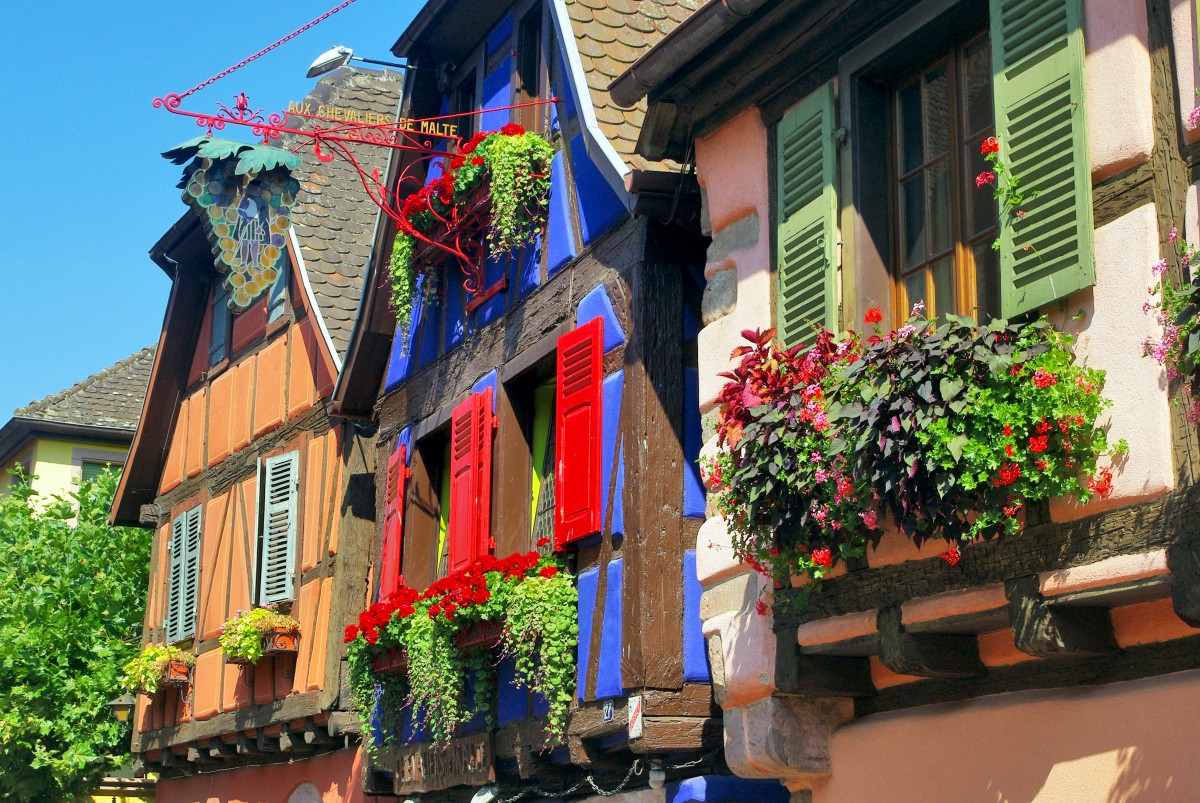
Ammerschwihr

The north (or more precisely the northwest) of Colmar is the most touristic region of Alsace, with its multitude of wine villages, each more beautiful than the other. There are three “pearls” of the Alsace Wine Route: Kaysersberg, Riquewihr and Ribeauvillé.
Ammerschwihr, like other neighbouring villages, was utterly devastated during the terrible fighting of the Colmar Pocket in the winter of 1944-45. However, today it is hard to believe that it was only a field of ruins at the Liberation. After the reconstruction, Ammerschwihr regained its charm and tranquillity. To discover: the Saint-Martin church and its slender bell tower, the Obertor (High Gate, from 1608), the Tour des Bourgeois (1535) and the Tour des Fripons (1535).
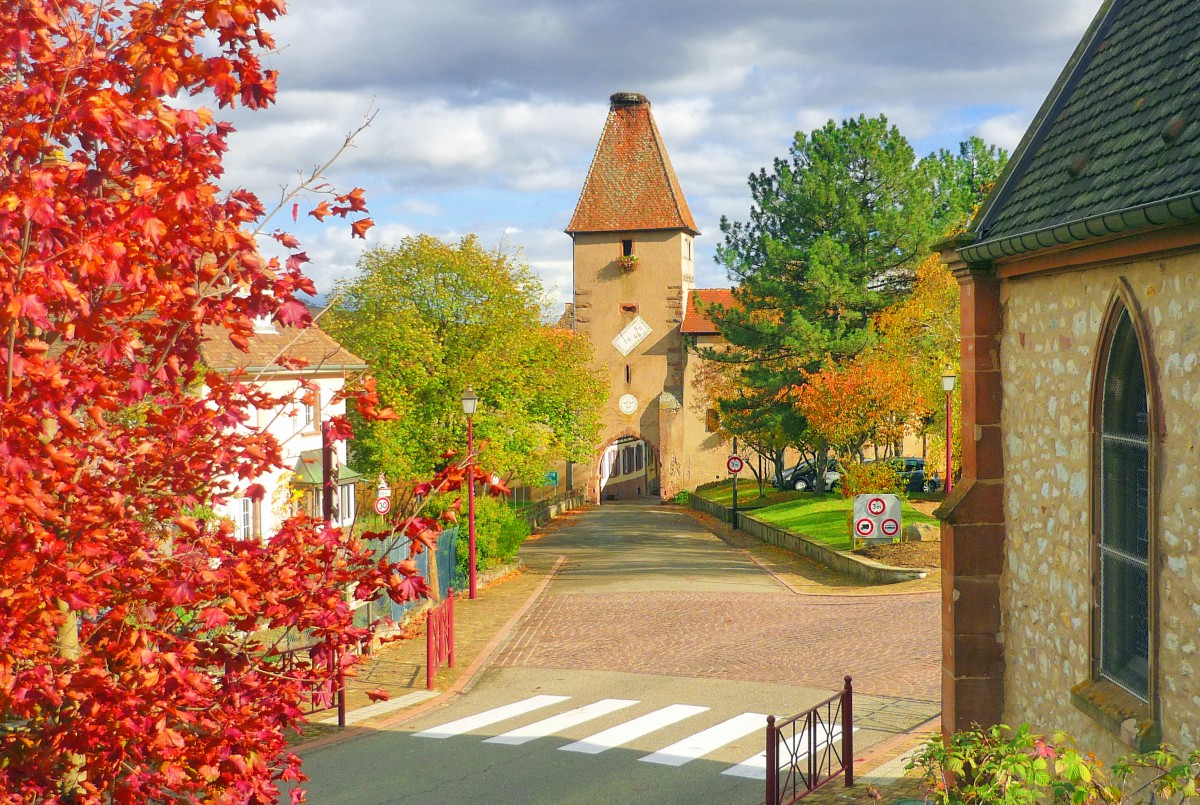
A poignant reminder of the Allied bombings that destroyed 85% of the village, the ruins of the Town Hall. Edified in 1552, it was one of the region’s finest examples of Renaissance architecture.

And then, there is its famous vineyard. The Kaefferkopf is the name of a hill producing high-quality grapes.
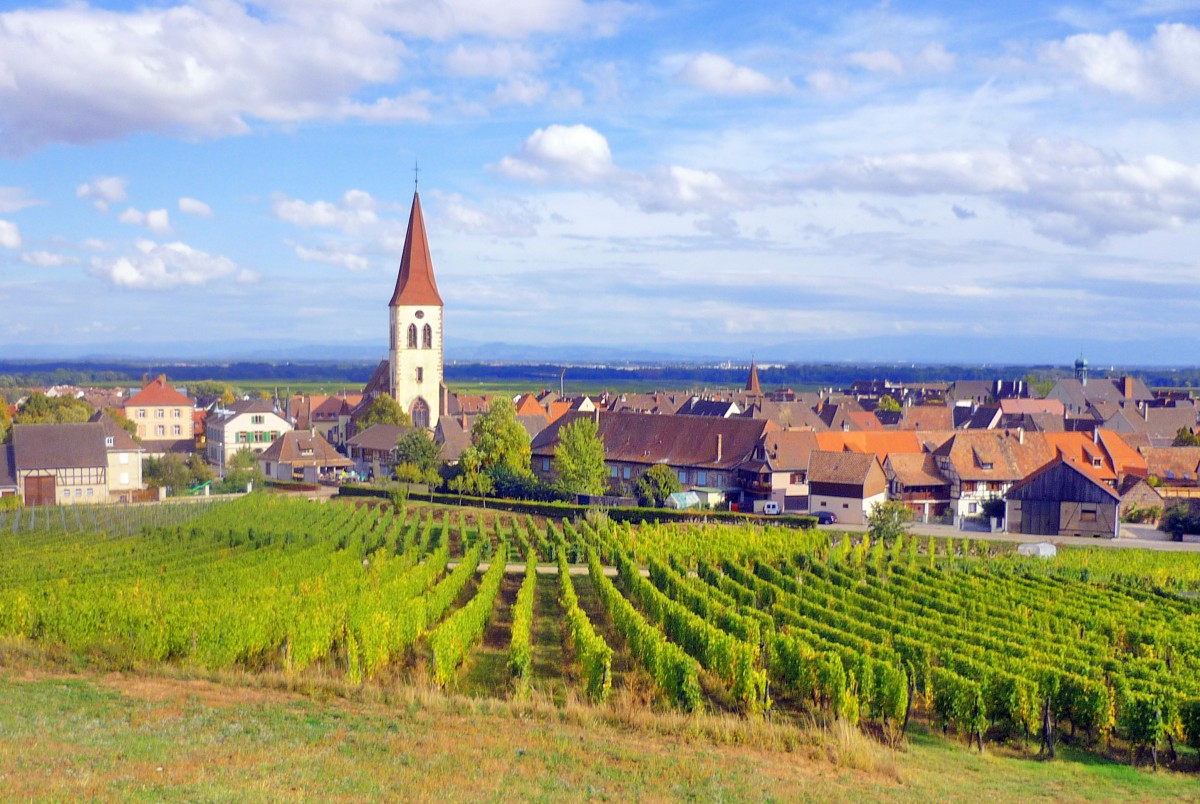
Kaysersberg
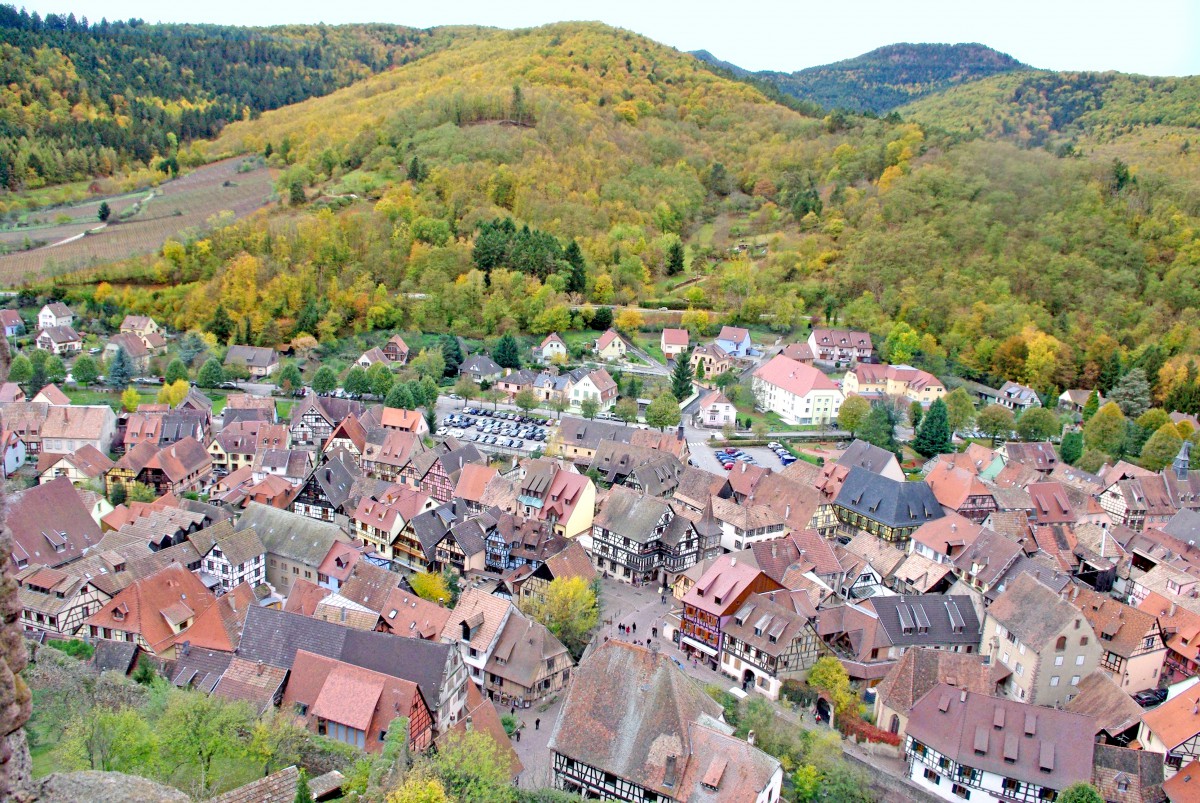
Kaysersberg means “the Emperor’s Mountain“. A bit pompous as a name? Not at all, because if you’ve never heard of Kaysersberg, it’s high time you discovered this tourist mecca in Alsace. Shall I take you into my confidence? Kaysersberg is one of my favourite places in France. My two weeks in 2012 (during an intensive French course we organised from Sydney) were unforgettable. Of my many visits to Kaysersberg (I’m a regular!), I have published several articles of discovery on this blog.
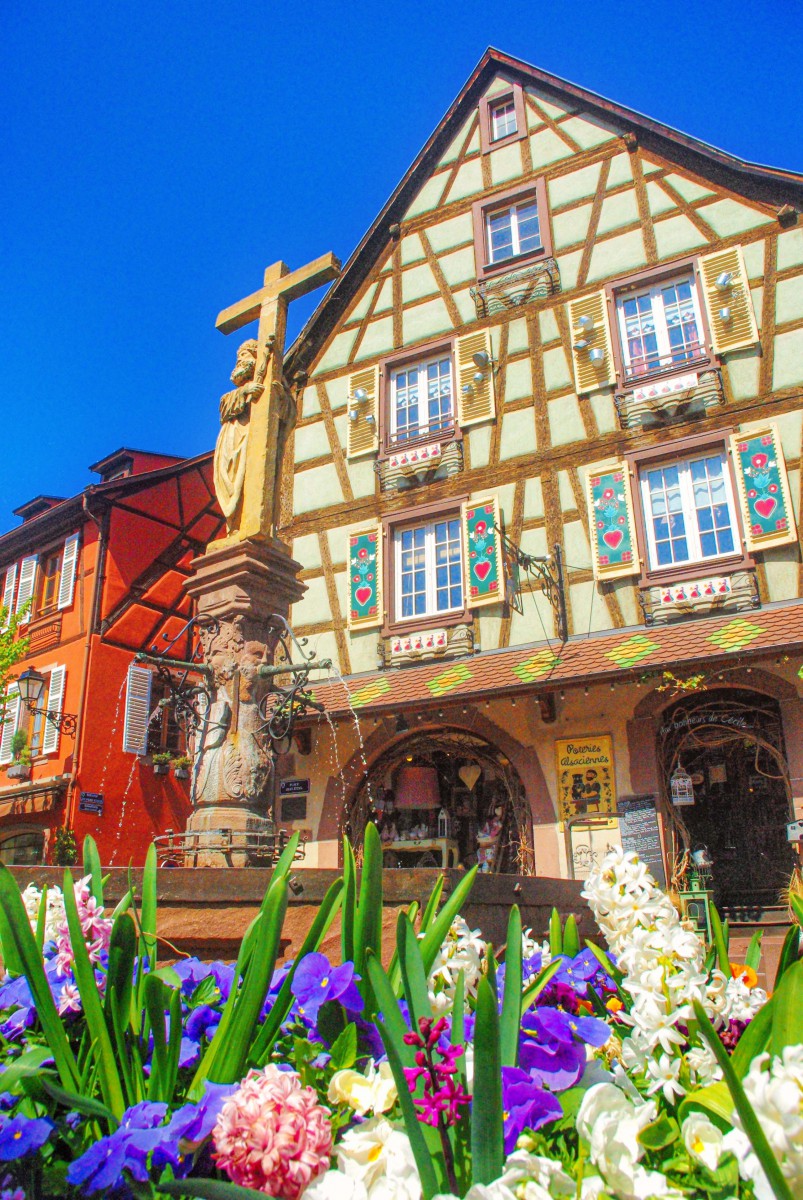
To sum up, what you should see in Kaysersberg: the Grand’rue (rue du Général de Gaulle), the medieval fortified bridge, unique in Alsace, the Sainte-Croix church, the castle perched above the roofs…
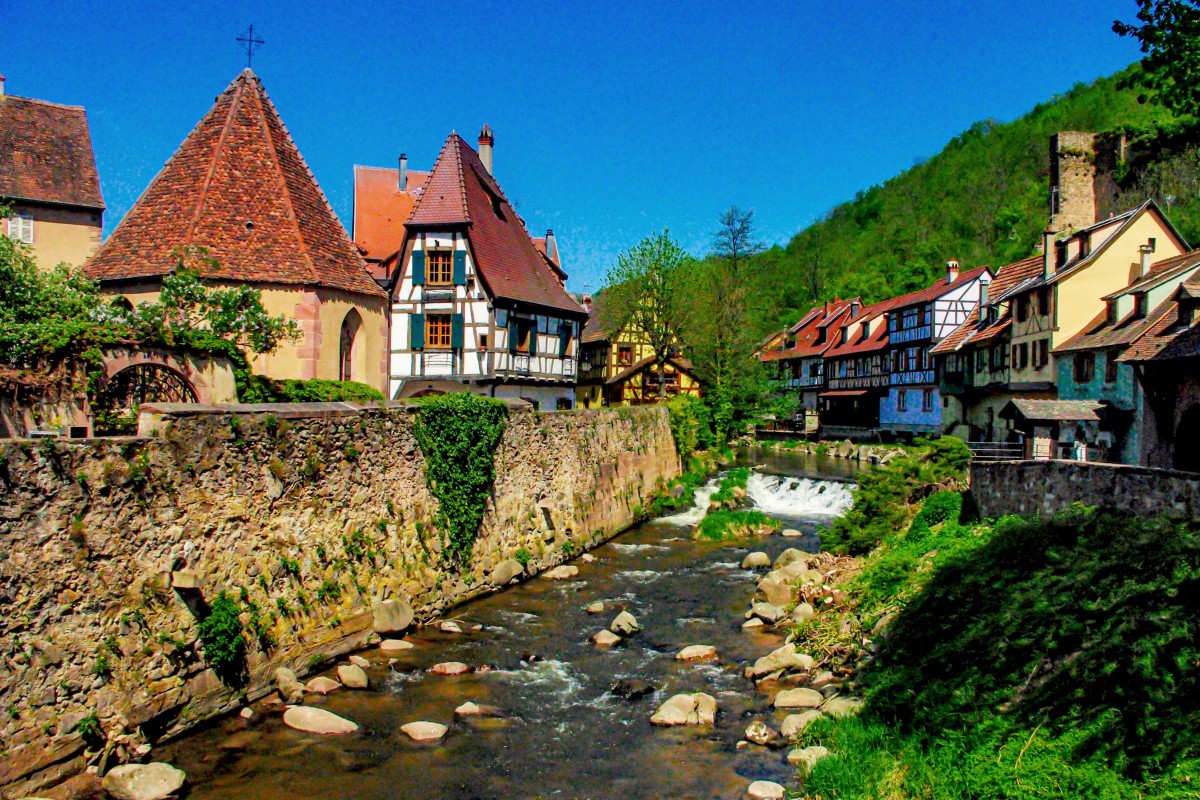
And when it comes to gastronomy, the birthplace of Doctor Schweitzer is not to be outdone. Enjoy exceptional cuisine at Le Chambard or Le Moréote.
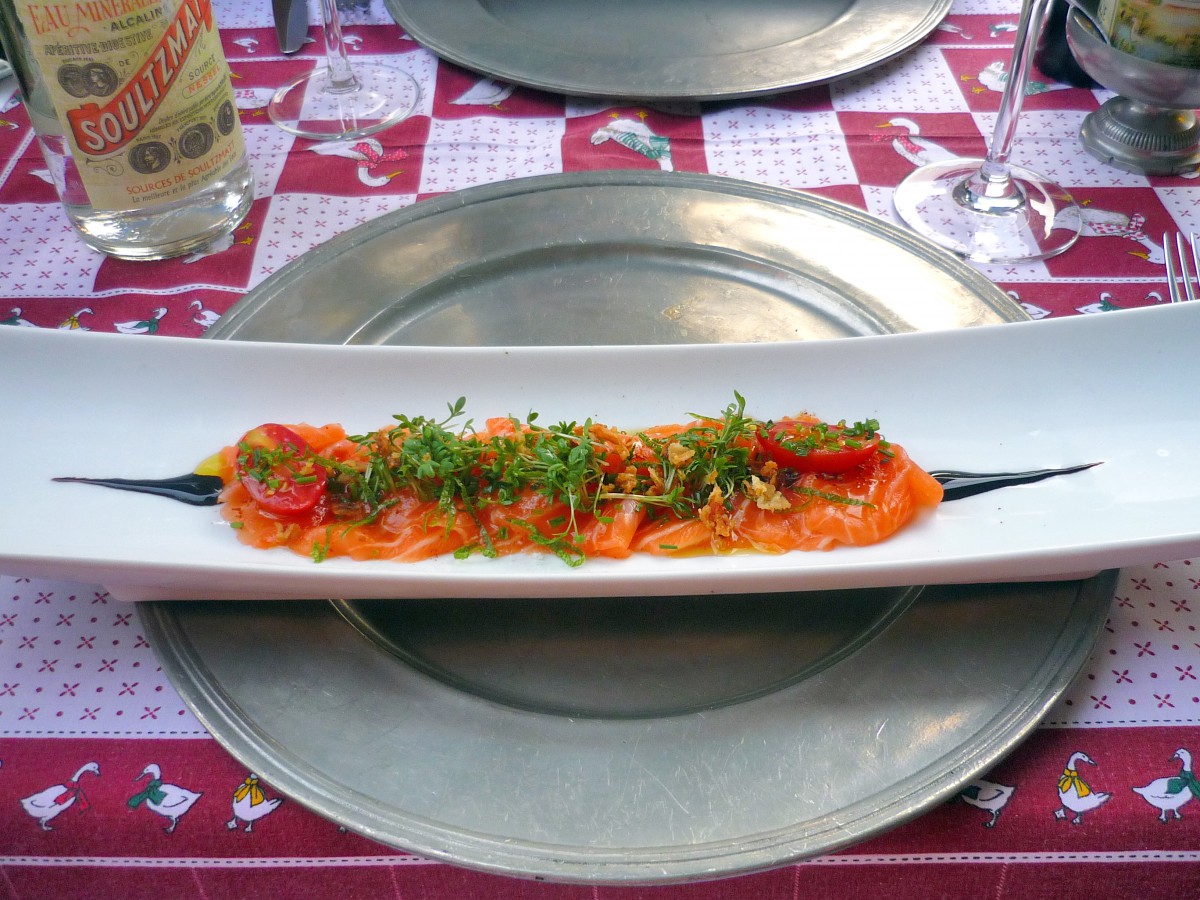
Frankly, I wasn’t surprised to find it in 1st place in the list of the show Le Village Préféré des Français in 2017!
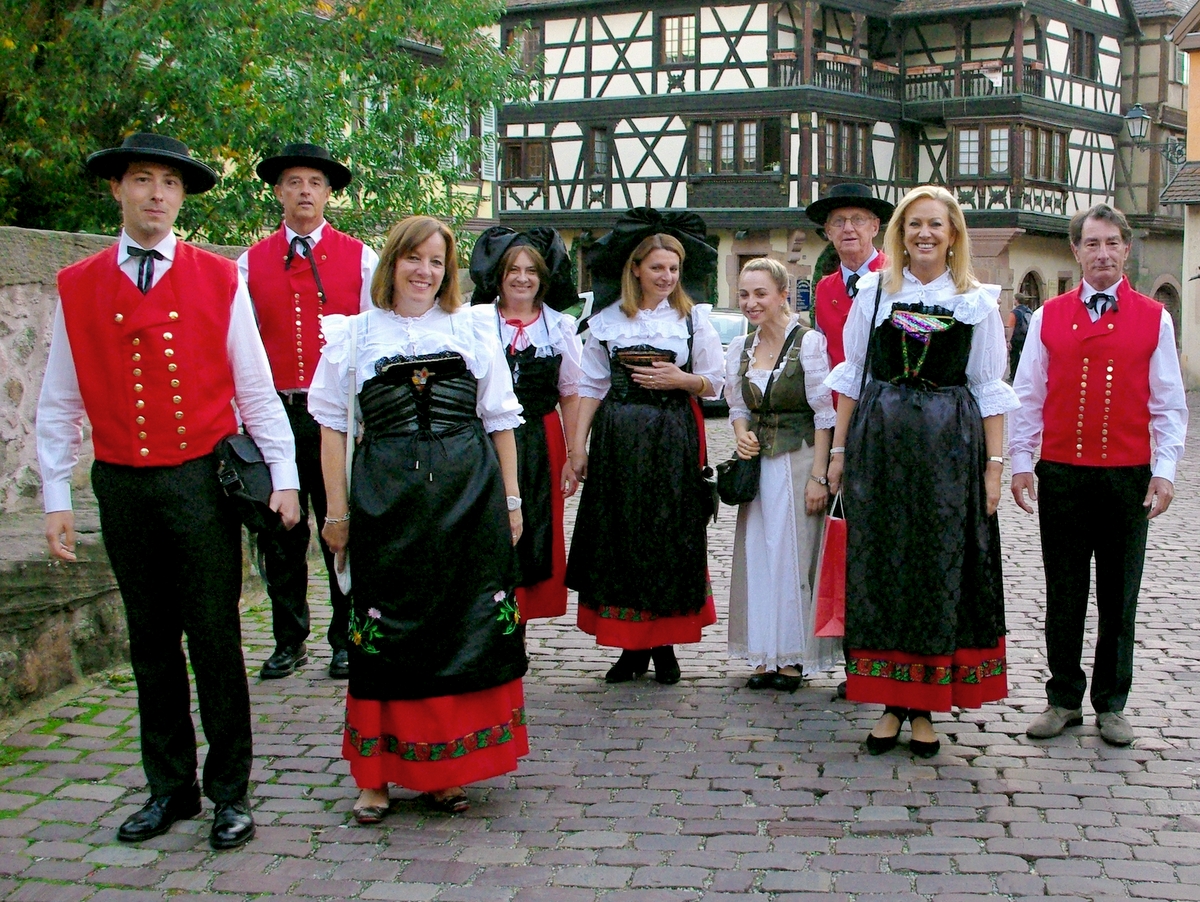
Kientzheim
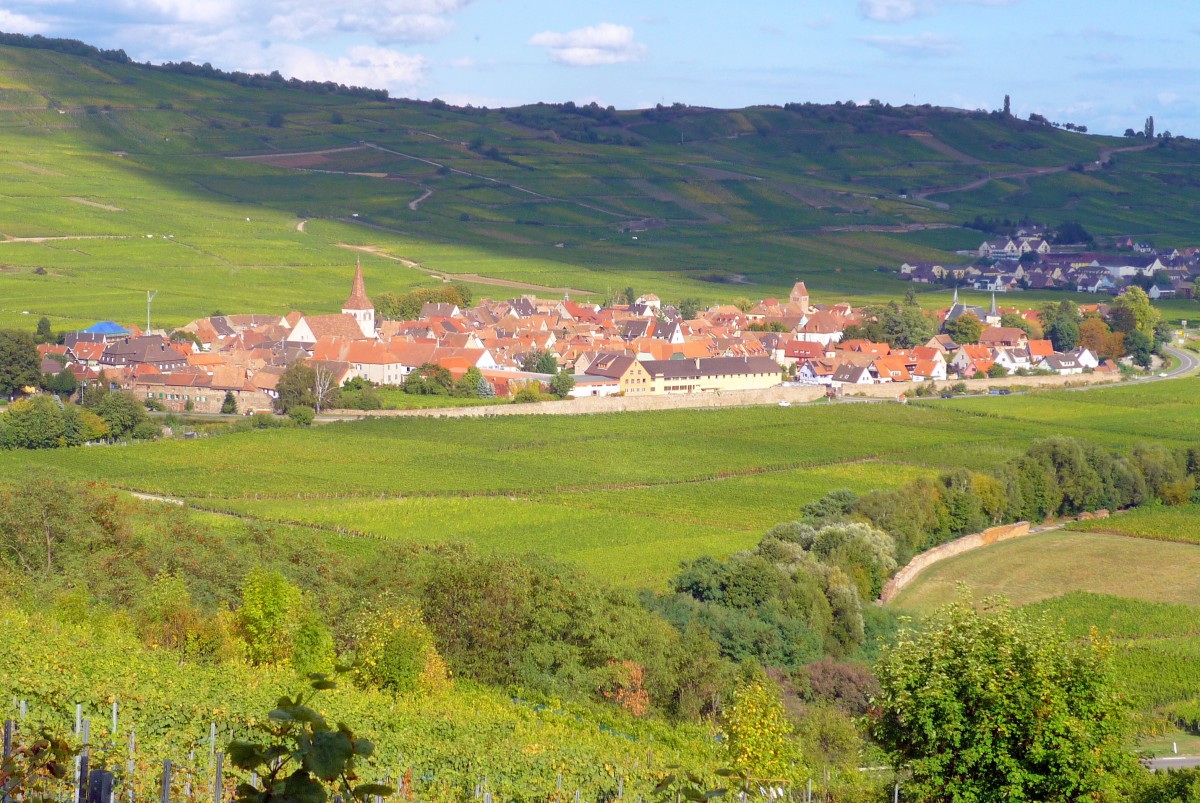
In the past (before January 1st 2016), Kientzheim was an independent commune. Since then, it has become part of a new commune, Kaysersberg-Vignoble, with Kaysersberg and the neighbouring village of Sigolsheim. But rest assured, nothing has changed. You will still discover this fortified village and its Alsace wine museum.
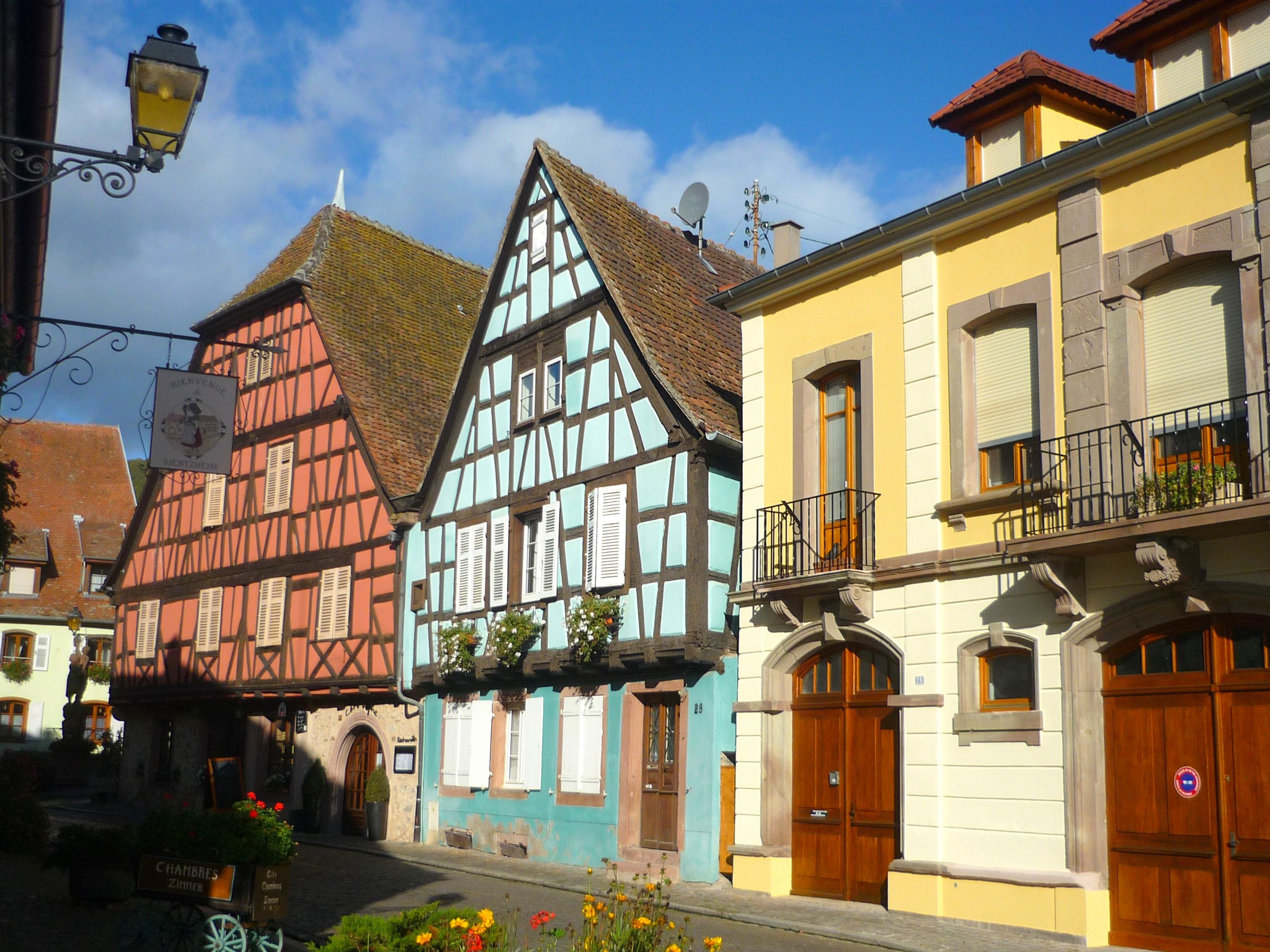
Please read this dedicated article to learn more about Kientzheim (not to be confused with Kintzheim in the Bas-Rhin!).
The national Necropolis of Sigolsheim
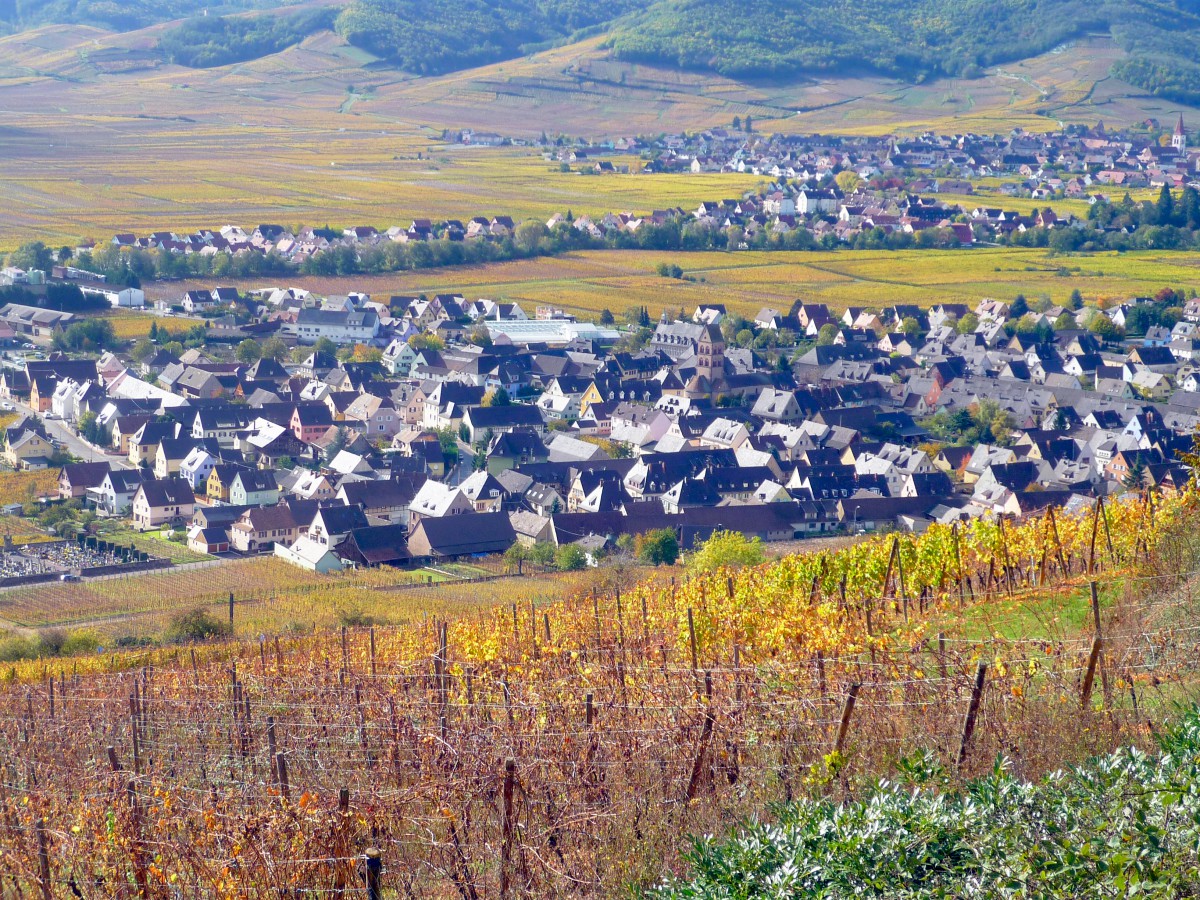
Less than 15 kilometres north of Colmar is a small hillock, the last outcrop of the Vosges sub-hills. Covered by the vines of the Alsace Grand Cru Mambourg, it shelters a national Necropolis on its summit. This vast war cemetery bears witness to the number of men who perished during the fighting in the Colmar pocket in the winter of 1944-45. Among the 1,589 graves of soldiers who “Died for France”, there are 792 graves of North African soldiers and 15 graves of Jewish soldiers.
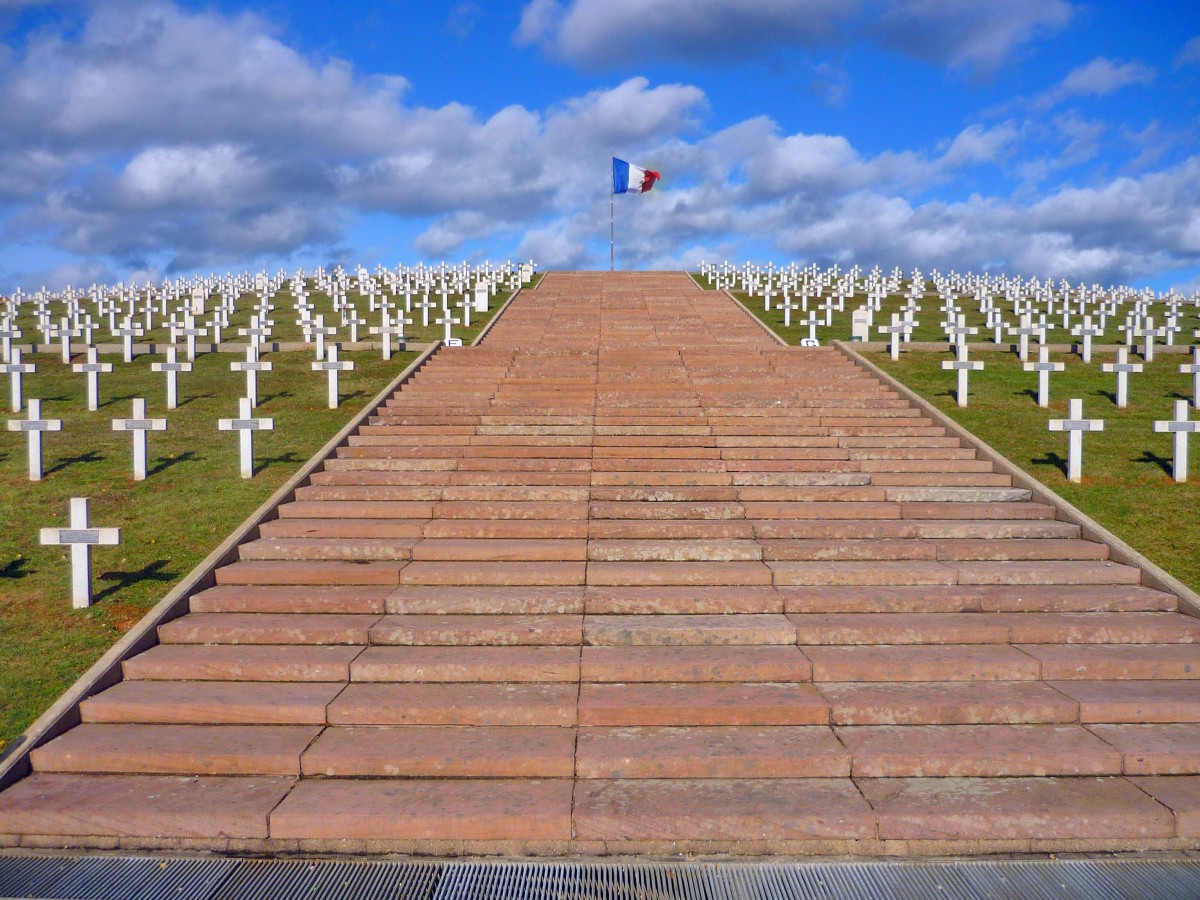

The view over the whole Colmar region is fantastic. From the Haut-Kœnigsbourg castle to the Hohlandsbourg castle, passing by the vineyards of Riquewihr, the three castles of Ribeauvillé, Kientzheim, Kaysersberg, Ammerschwihr, the Trois-Épis, the Alsace plain, the Black Forest and the Jura. In perfect weather, the snow-capped peaks of the Swiss Alps are visible to the south.
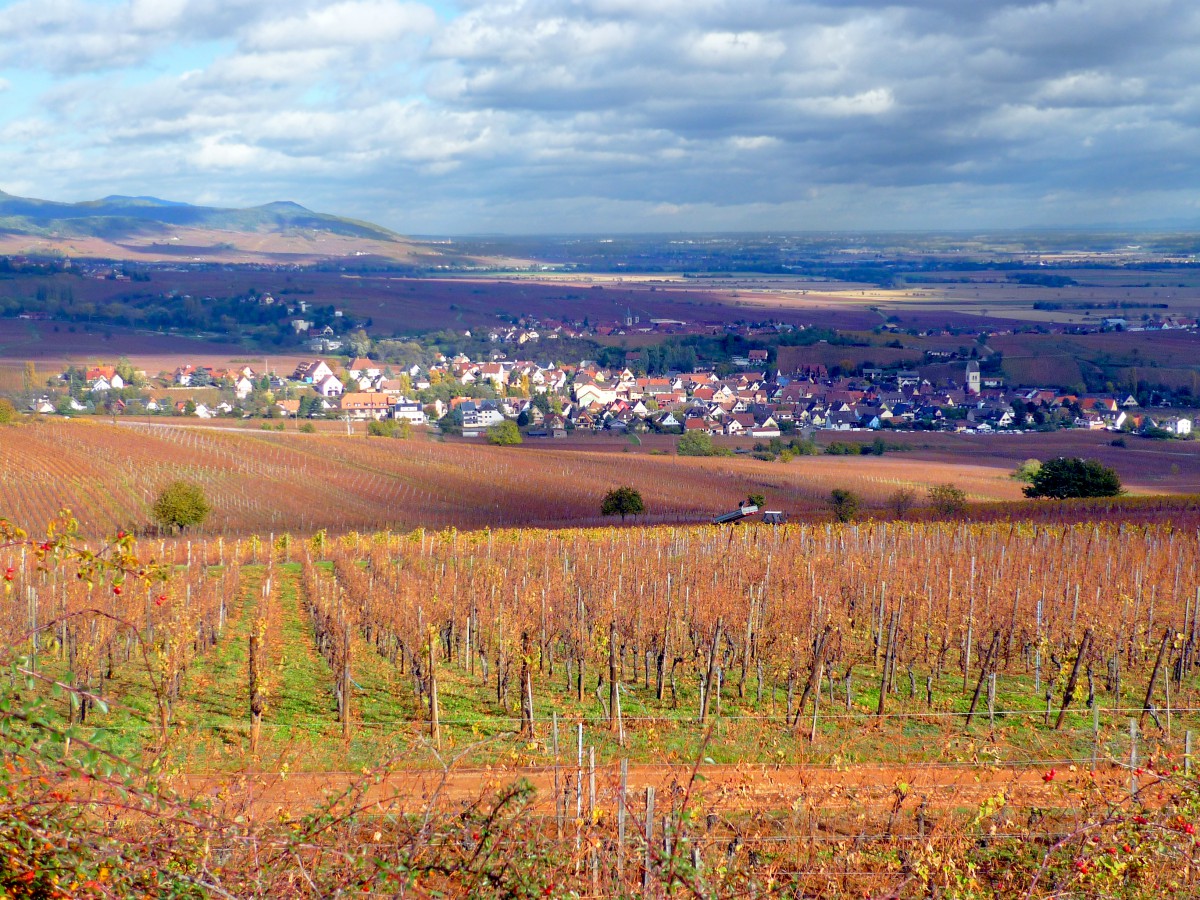
Beblenheim
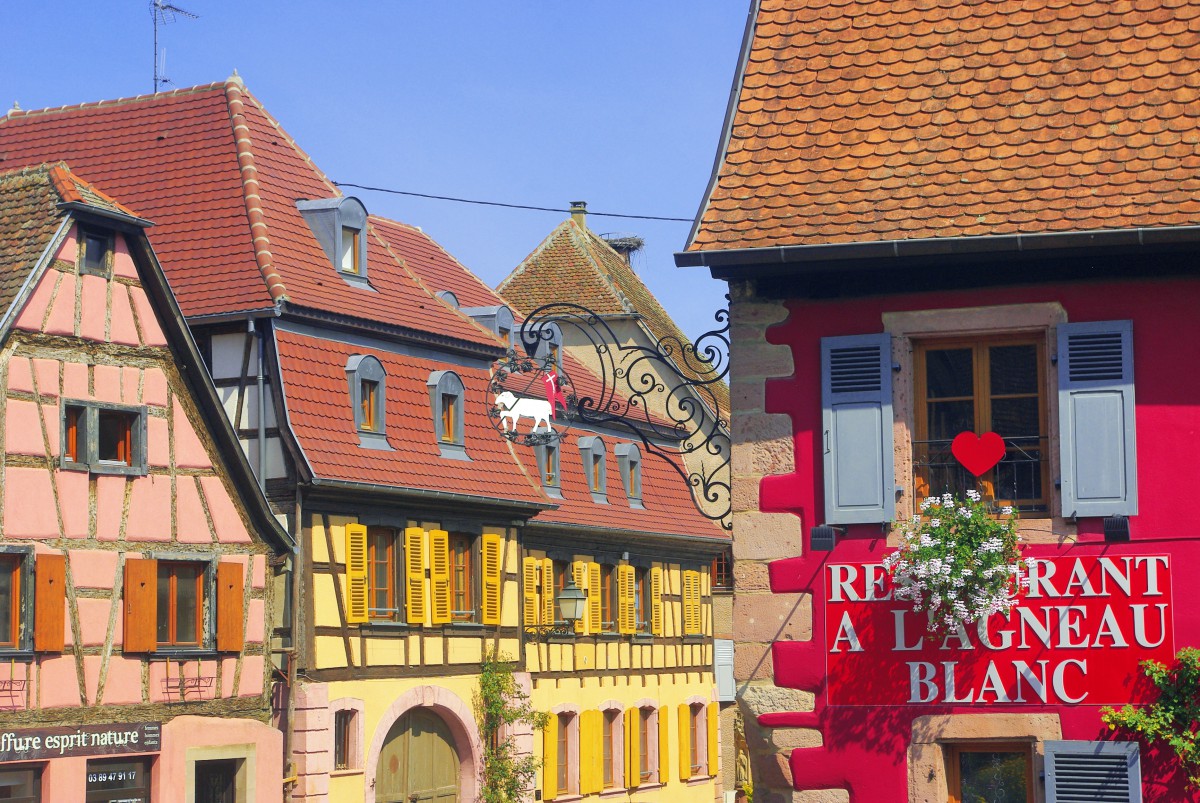
It was only recently that I walked through the streets of Beblenheim. Tourists on their way to Riquewihr, Kaysersberg or Ribeauvillé won’t think of stopping in Beblenheim Yet, this village has some very photogenic streets.
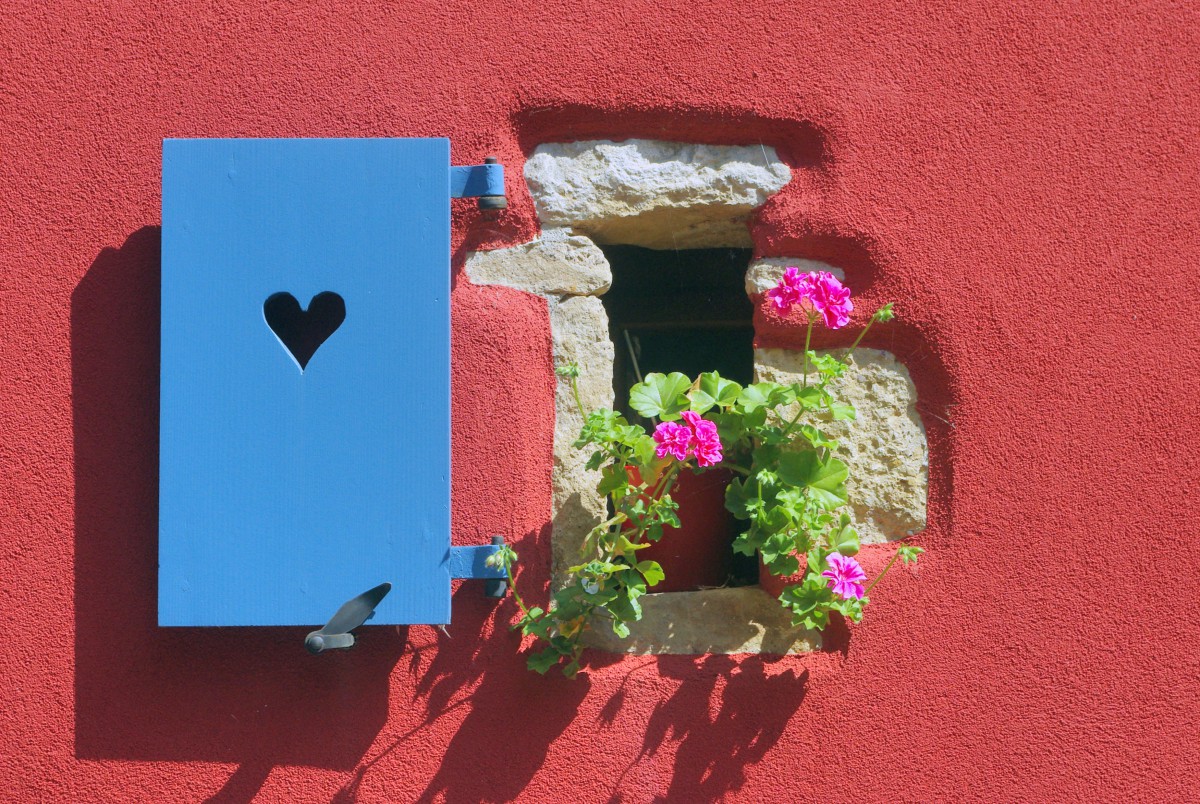
From 1298, the village was part of the seigneury of Riquewihr, which belonged to the dukes of Wurtemberg. This explains why Beblenheim (and Riquewihr) were among the last Alsatian towns to become French. It was not until the Revolution that France took possession of Beblenheim.
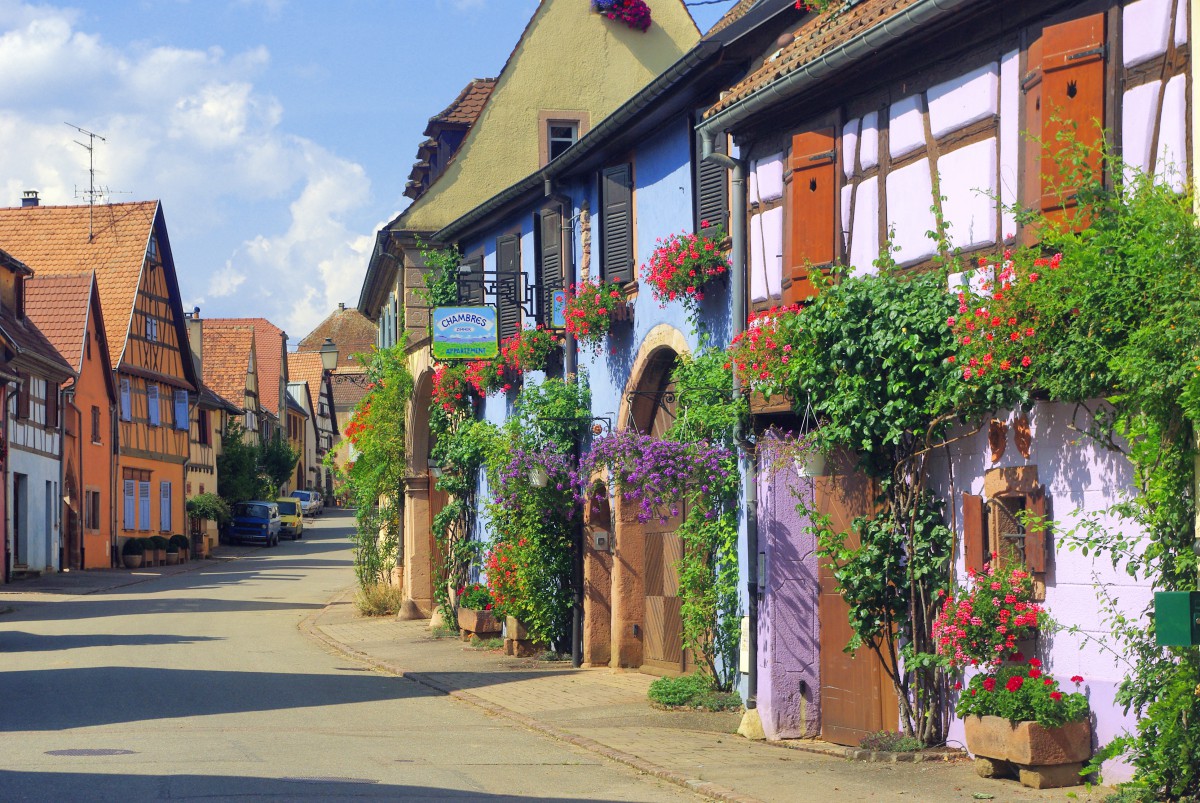
The village is small, and you won’t spend more than an hour there. Come on, you will have enough time to discover Riquewihr.
Riquewihr
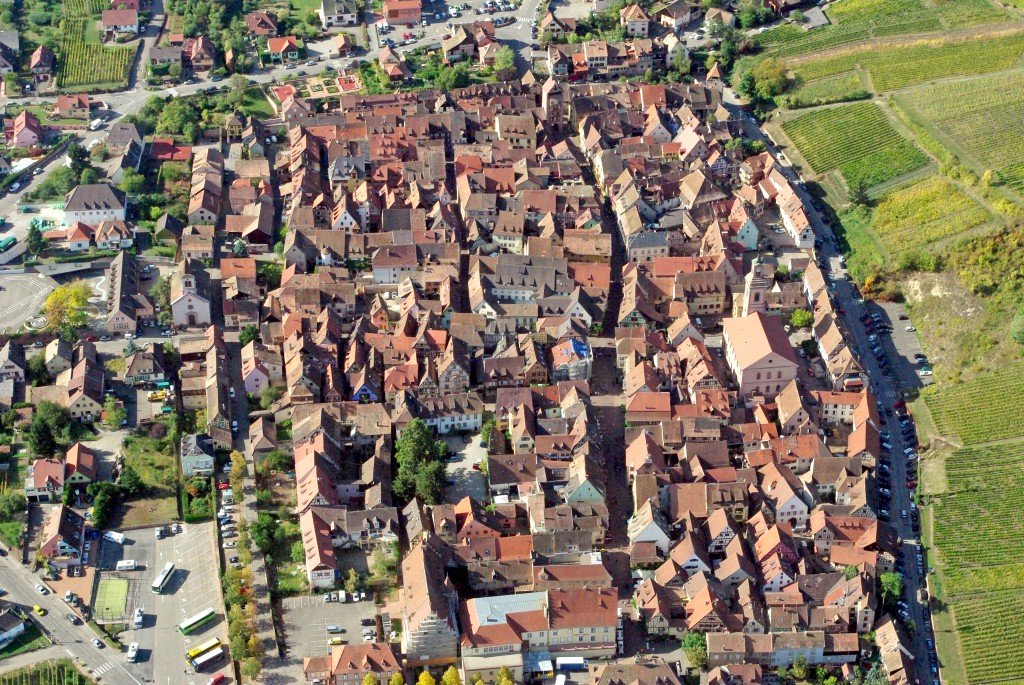
All of the places around Colmar, Riquewihr is a must-see village! Like Kaysersberg and Eguisheim, this historic town has won many awards:
- In 2003, Riquewihr entered the exclusive list of the association Les Plus Beaux Villages de France.
- In 2012, Riquewihr was ranked 6th on the list of the “Village Préféré des Français” by the viewers of the France 2 TV show.
- Then, in 2016, Riquewihr was elected with Saint-Cirq-Lapopie as the most beautiful village in France by the association of Japanese travel agencies.

Discovering Riquewihr means admiring the beautiful winegrowers’ houses, the Dolder (a fortified gateway decorated with half-timbering) and the vineyard offering magnificent views over the village’s roofs.

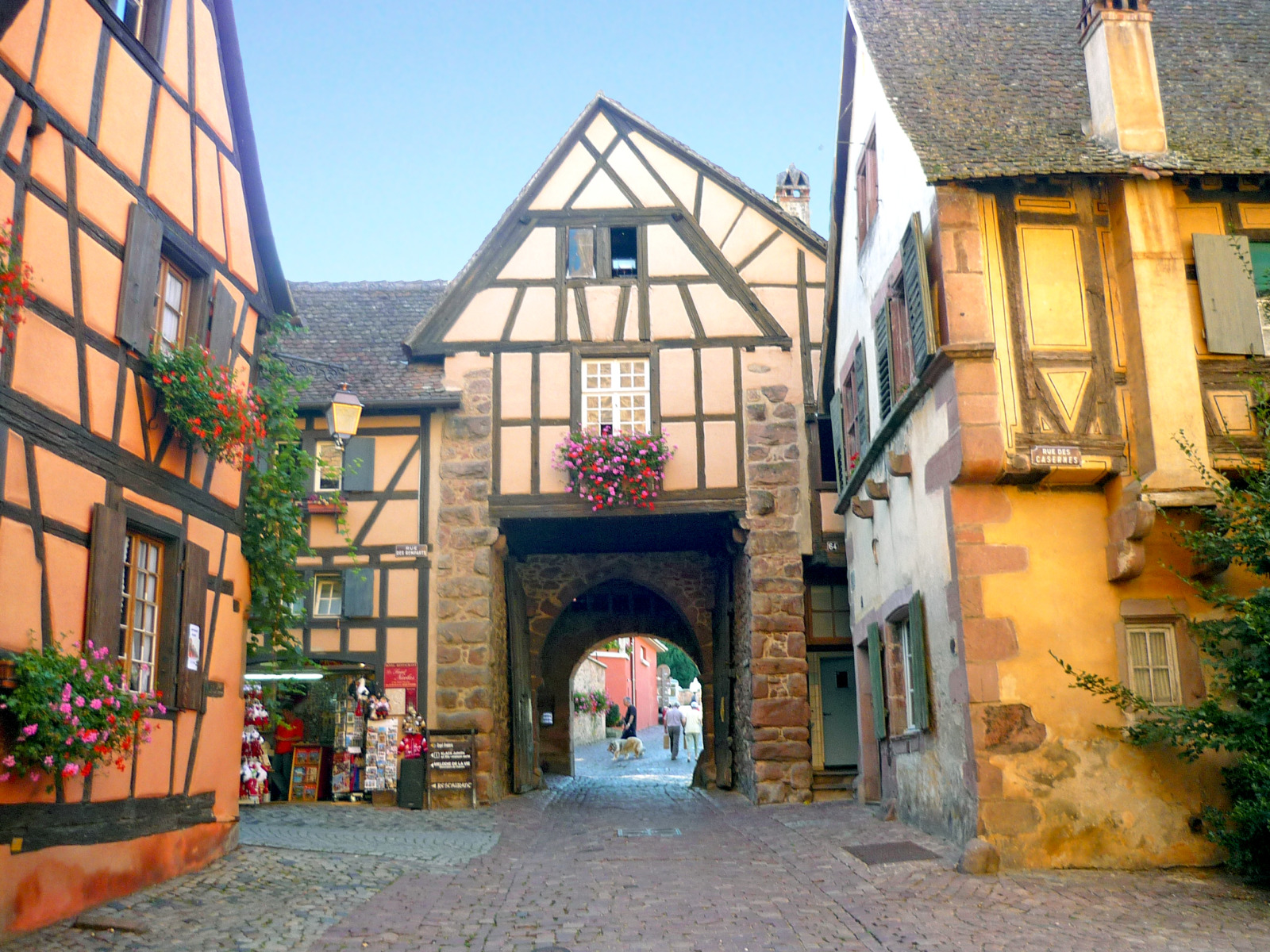
Zellenberg
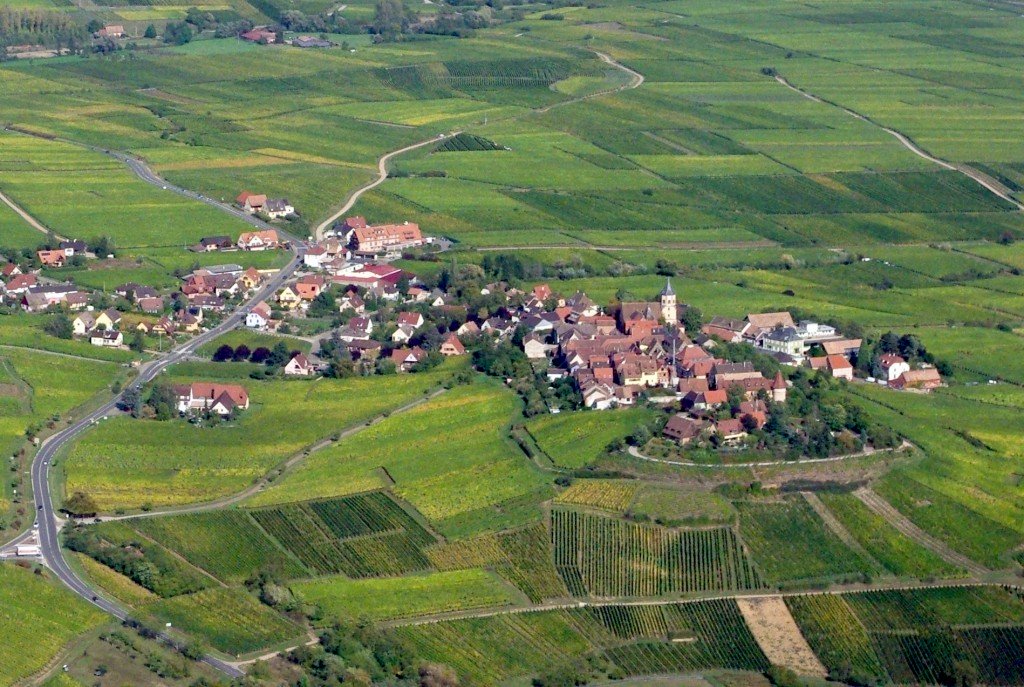
You can see it from the road that leads from Colmar to Ribeauvillé as vineyards surround the perched village of Zellenberg. It is a very picturesque site, a stone’s throw from Riquewihr. As the village is small, you won’t spend more than an hour there – unless you enjoy walking around Zellenberg through the vineyards like me.

You will be able to appreciate better the site: the village, the corner towers of the old rampart and the bell tower of the Saint-Ulrich church… and the soaring flight of white storks.
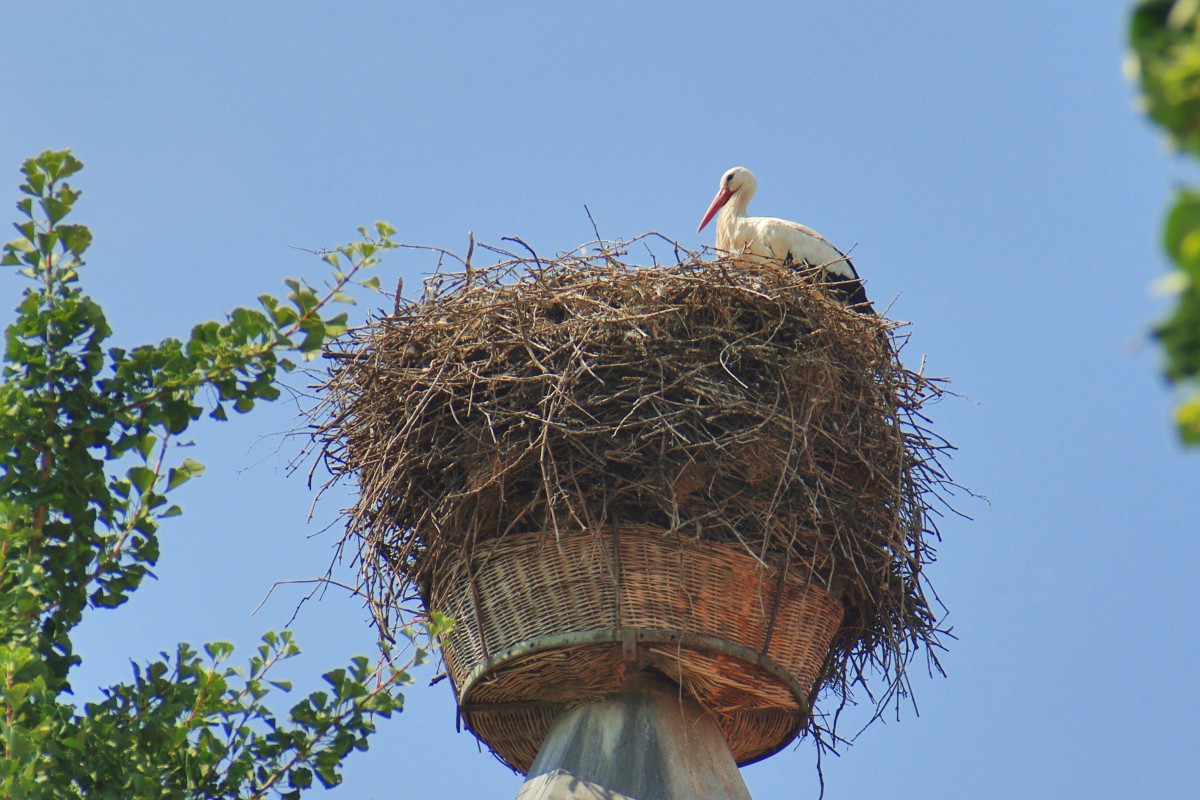
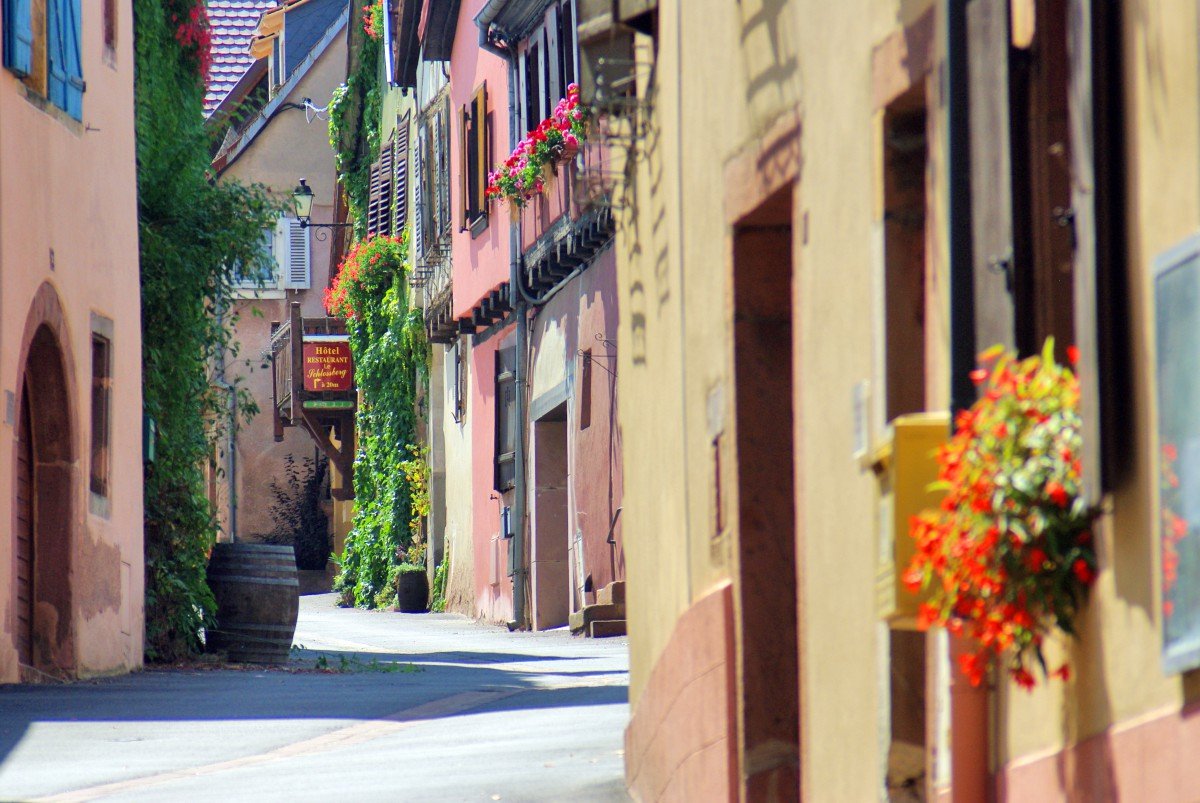
Hunawihr

The village of Hunawihr is definitely one of the prettiest sites on the Alsace Wine Route. Or one of the most famous. Nestled in a valley between Riquewihr and Ribeauvillé, Hunawihr owes its fame to its church. And this one is not located in the centre of the village. The church of Saint-Jacques-le-Majeur stands on a small spur dominating the village. The particularity of the sanctuary is that ramparts surround it. This is what makes it so charming.

The fortified church is bordered by a cemetery, from where one can enjoy a magnificent panorama over the Alsace plain.
Hunawihr has received the label of the association of the Most Beautiful Villages of France.
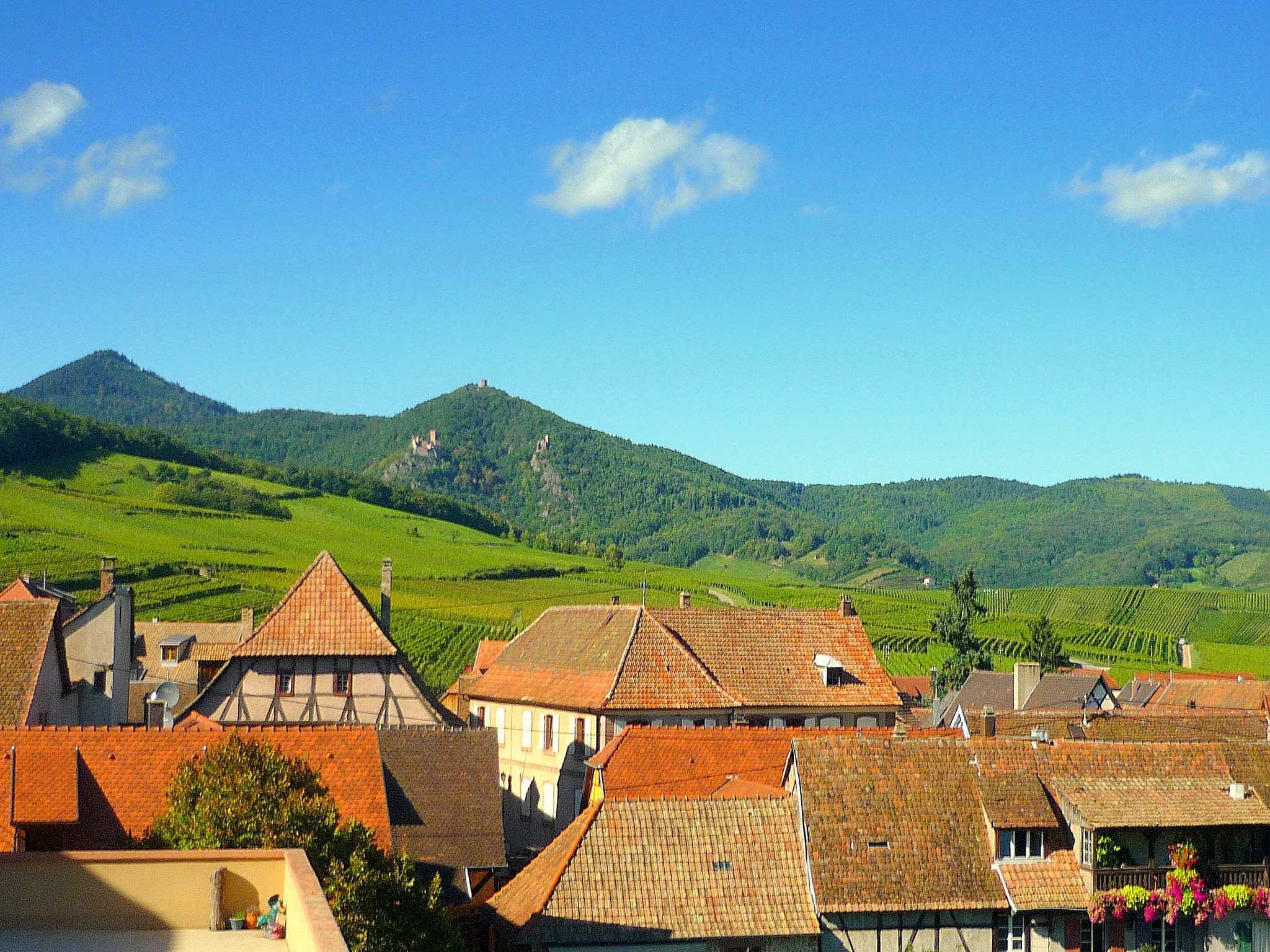
Ribeauvillé
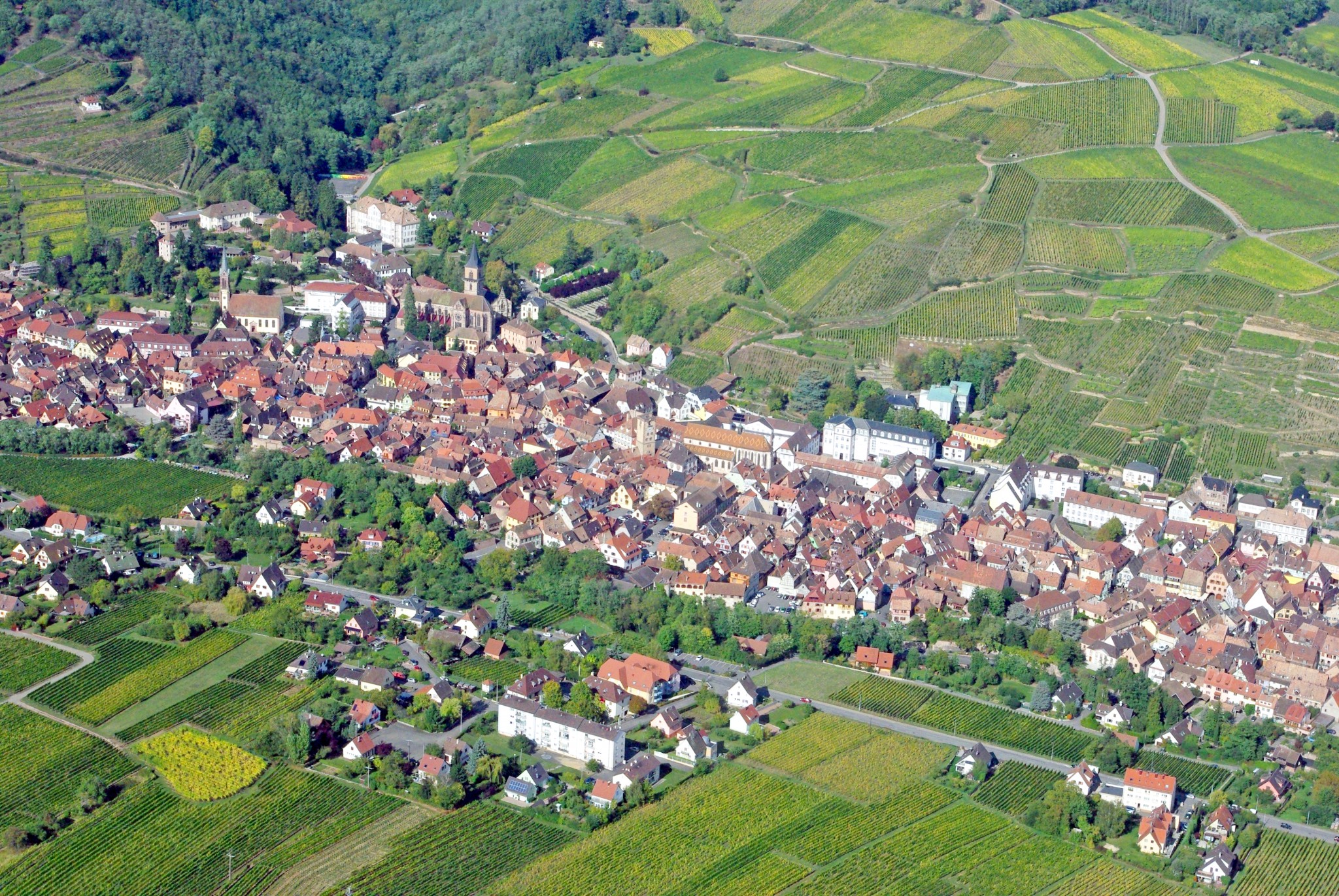
This is the town of the Ribeaupierre family! This influential dynasty in Alsace left its mark on Ribeauvillé for centuries from the Middle Ages to the 17th century. The backbone of Ribeauvillé is its Grand’rue. As you walk along it, you will discover the main half-timbered bourgeois houses, the squares adorned with Renaissance fountains, and the Tour des Bouchers.
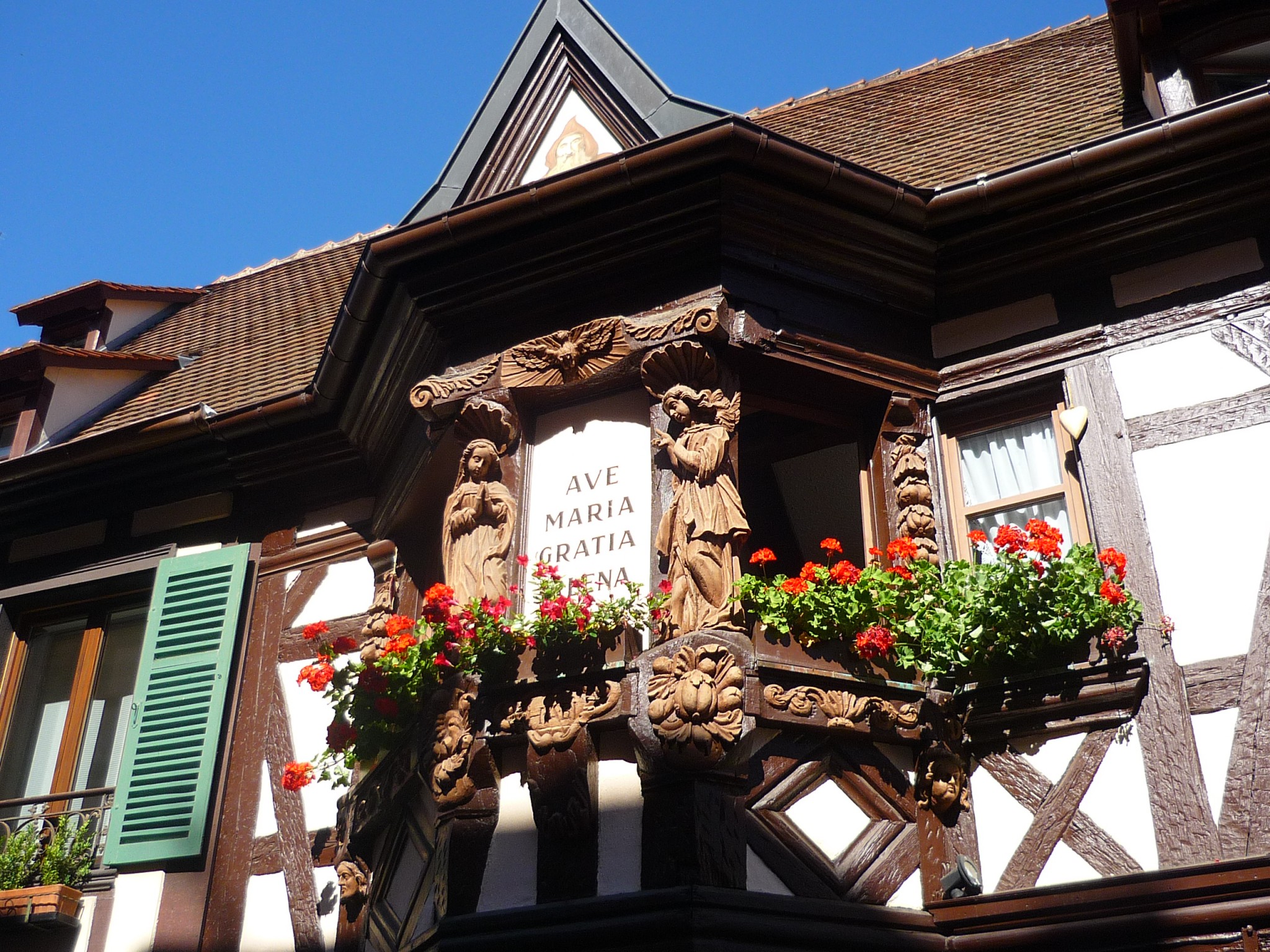

Ribeauvillé is dominated by the ruins of three castles: the Saint-Ulrich, the Girsberg and the Haut-Ribeaupierre. The climb to the fortresses can be steep and sporty… But you will be rewarded with a breathtaking view over the roofs of the town, the vineyards, the Vosges and the Alsace plain, which extends as far as the Black Forest.

Bergheim
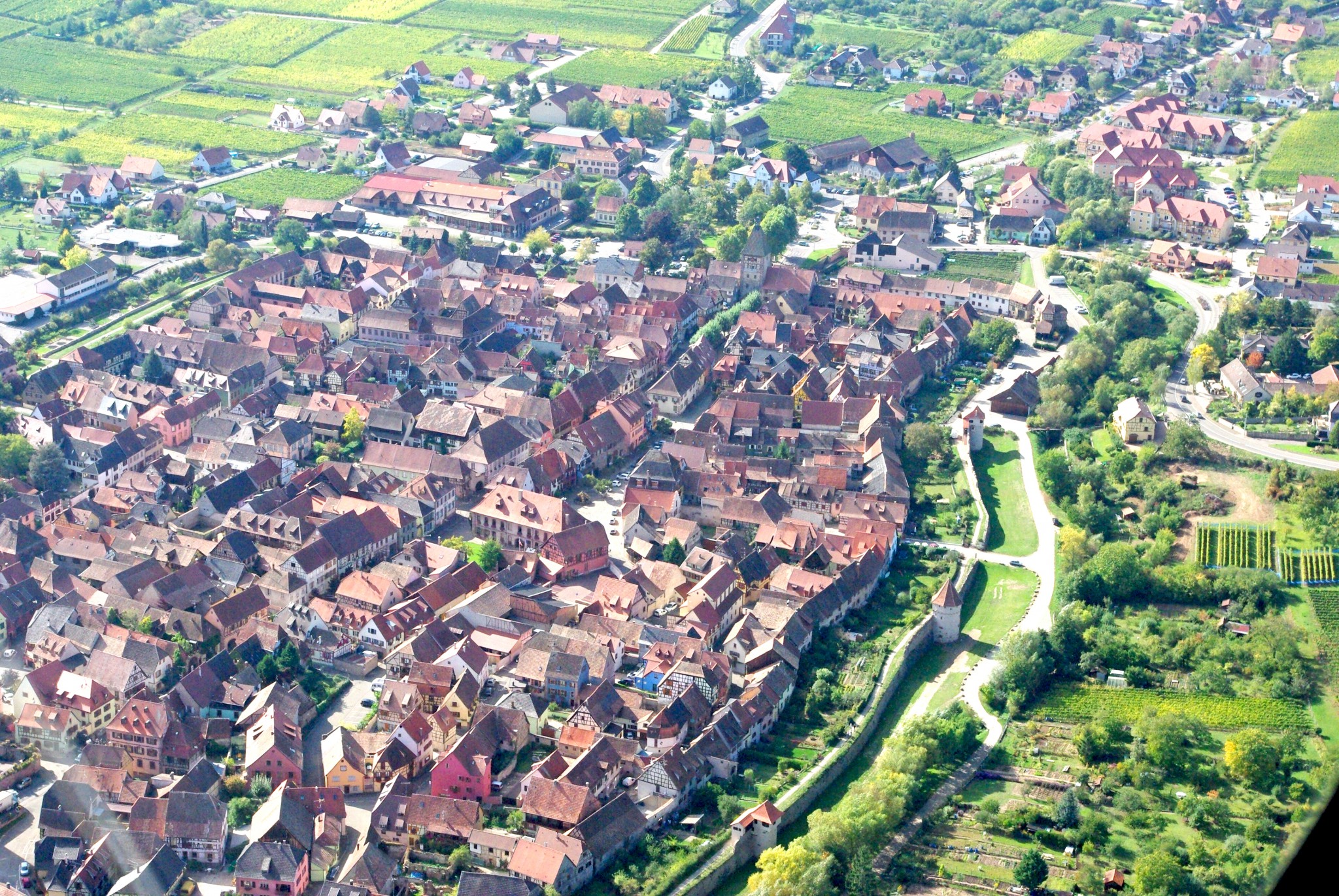
For a nice walk, choose the one that goes around the ramparts in Bergheim. On the road to Saint-Hippolyte, Bergheim is a unique village in Alsace. Because you see, it has kept its ramparts!
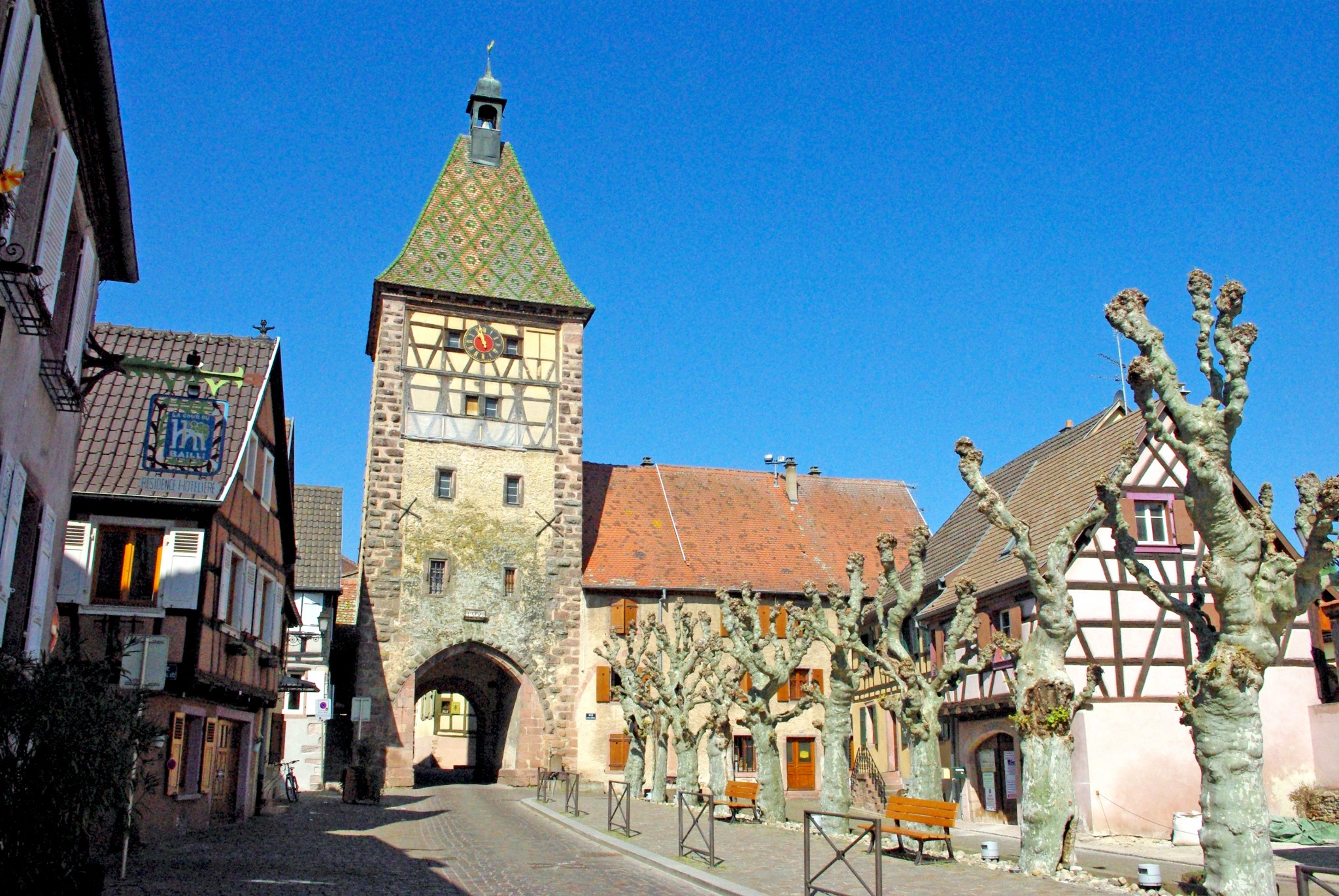
The walk will take you through houses, well-tended gardens and vineyards from the car park near the Obertor (the high gate). The historical centre of the village contains beautiful half-timbered houses and is beautifully decorated with flowers.
Bergheim’s crowning glory came in 2022 when it won the coveted title of “Village Préféré des Français” in the France 3 TV show presented by Stéphane Bern.
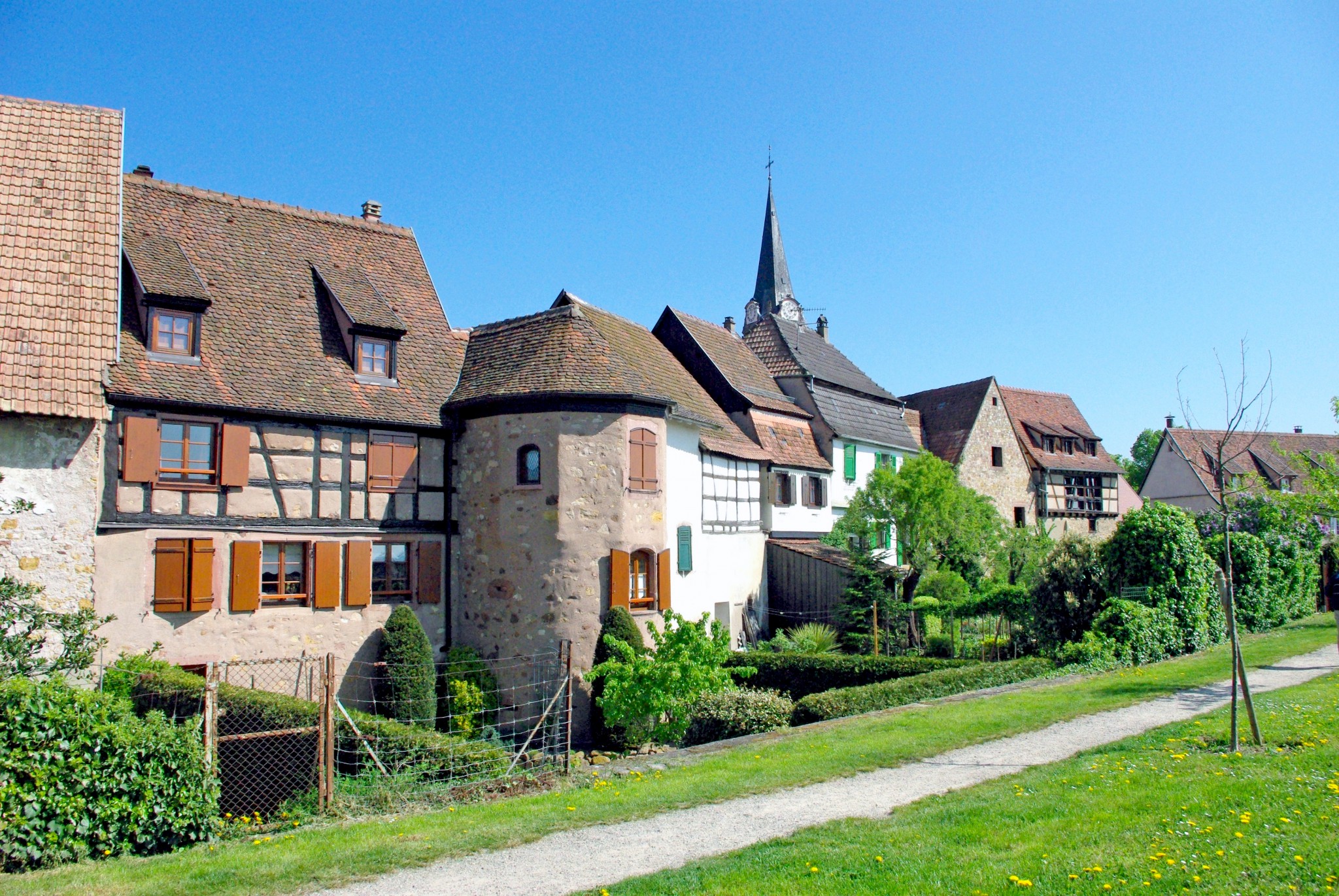
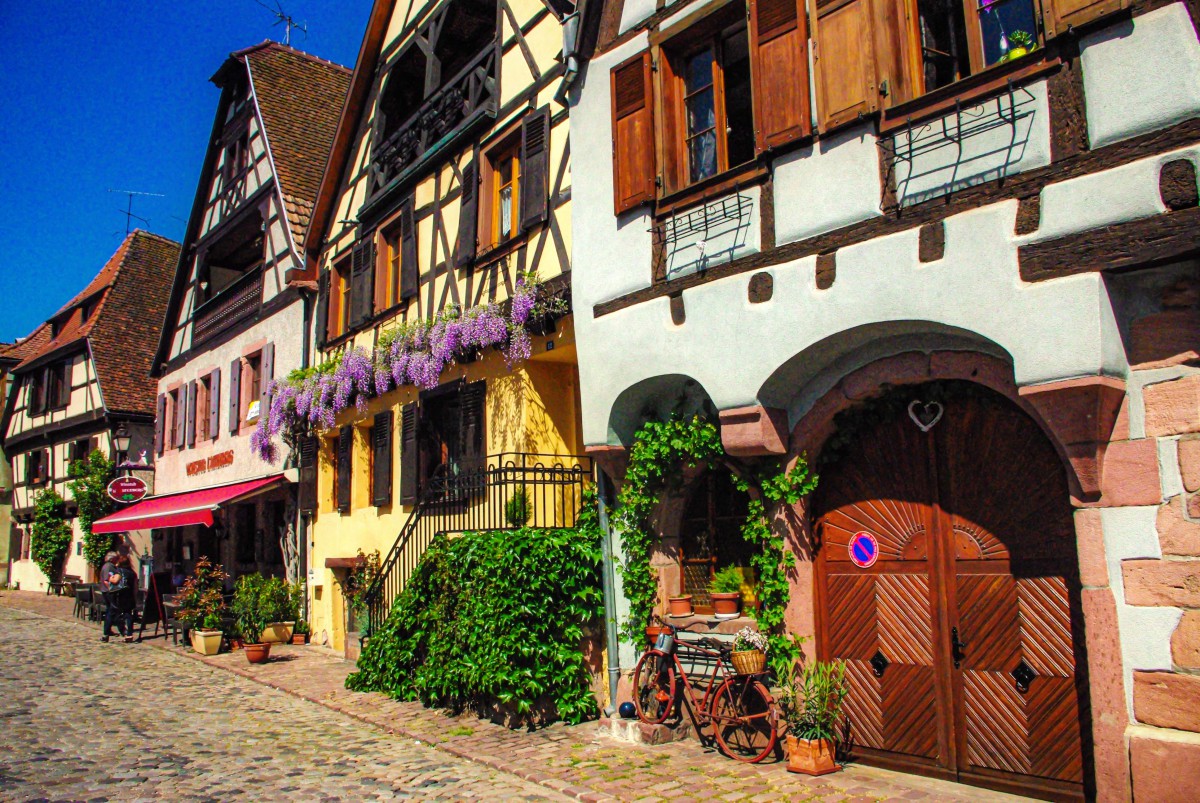
It’s time to leave the Alsatian vineyards and head towards the plain. A few more steps and we will have completed our ranking of the 20 sites to discover within 15 km of Colmar.
Guémar

Guémar is a small village on the road from Colmar to Sélestat that deserves a visit. Take the time to explore the village: from the Obertor (the High Gate, one of the most beautiful fortified gates in Alsace dating from 1400) to the walks along the Fecht river, you will appreciate the calm of the place.
![Porte Haute, Guémar © Ralph Hammann – licence [CC BY-SA 4.0] from Wikimedia Commons](https://frenchmoments.eu/wp-content/uploads/2021/09/Porte-Haute-Guémar-©-Ralph-Hammann-licence-CC-BY-SA-4.0-from-Wikimedia-Commons.jpg)
Illhaeusern and the Grand Ried

Have you got a bit of time left? Head to the village of Illhaeusern.
Illhaeusern is an old fishing village crossed by the river Ill. In fact, the name of the village means “Houses along the Ill” in German.
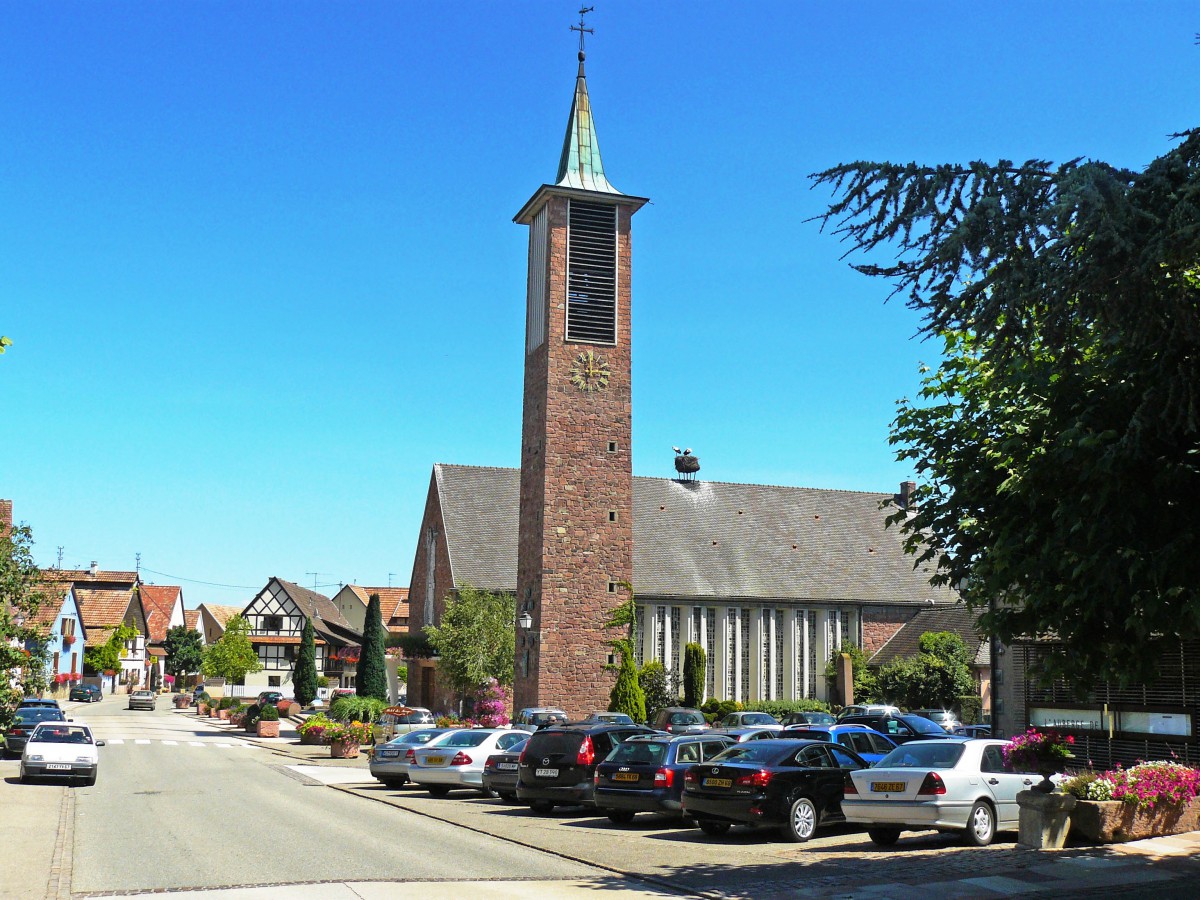
Unfortunately, not much remains of the old village. Illhaeusern was indeed wholly destroyed during the fighting in the Colmar pocket in the winter of 1944-45. However, the site remains bucolic if you are lucky enough to go for a boat ride. Good to know if you like good food: Illhaeusern is one of the high places of French gastronomy today.
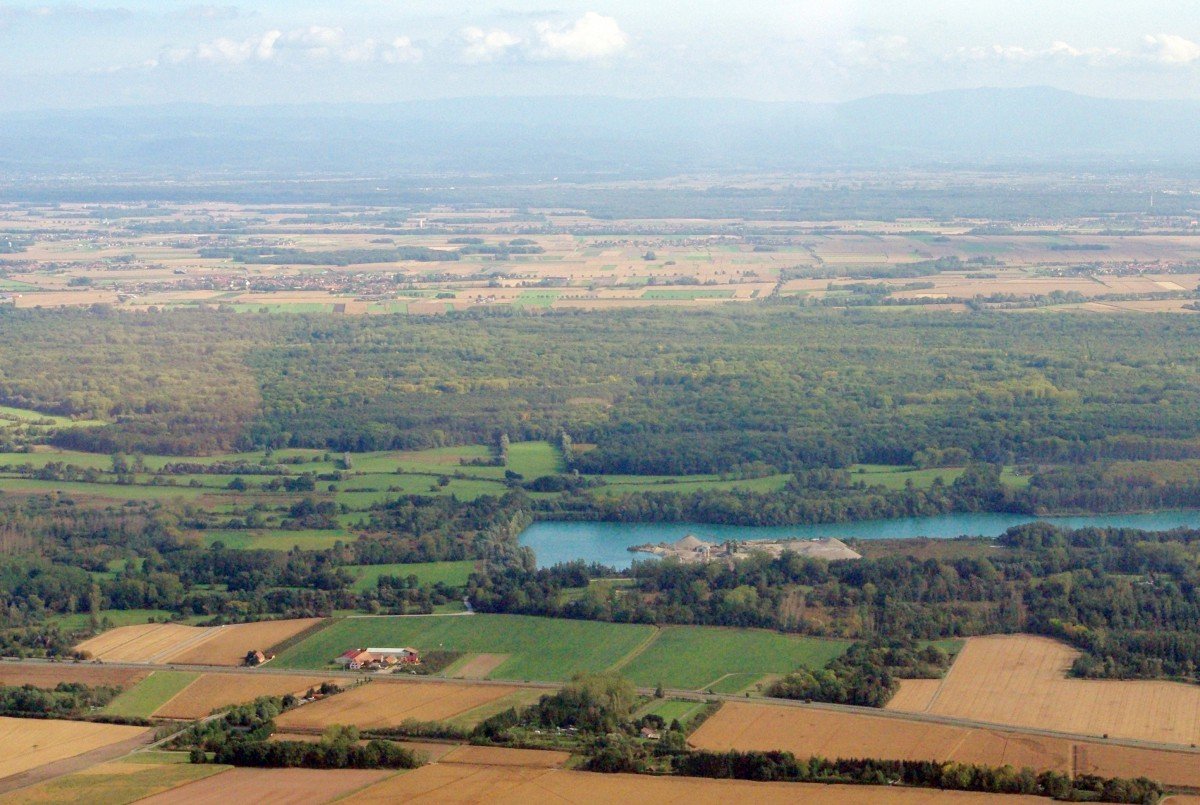
From Illhaeusern to Neuf-Brisach, you will cross an area called the Grand Ried. Stretching between the river Ill and the Rhine from Colmar to Strasbourg, the Grand Ried is a region of flooded meadows and alluvial forests.
Neuf-Brisach
![Neuf-Brisach from above © Luftfahrer – licence [CC BY-SA 3.0] from Wikimedia Commons](https://frenchmoments.eu/wp-content/uploads/2021/09/Neuf-Brisach-vu-du-ciel-©-Luftfahrer-licence-CC-BY-SA-3.0-from-Wikimedia-Commons.jpg)
East of Colmar, we are close to the Rhine, on the border with Germany. Neuf-Brisach, for example, is a jewel of 17th-century military architecture, closer to the Black Forest than to the Vosges.
You would have to fly over Neuf-Brisach to appreciate the work of a certain Vauban. Opposite Breisach-am-Rhein (the former Vieux-Brisach), now in Germany, Neuf-Brisach is listed as a UNESCO World Heritage Site as part of the significant Vauban sites.
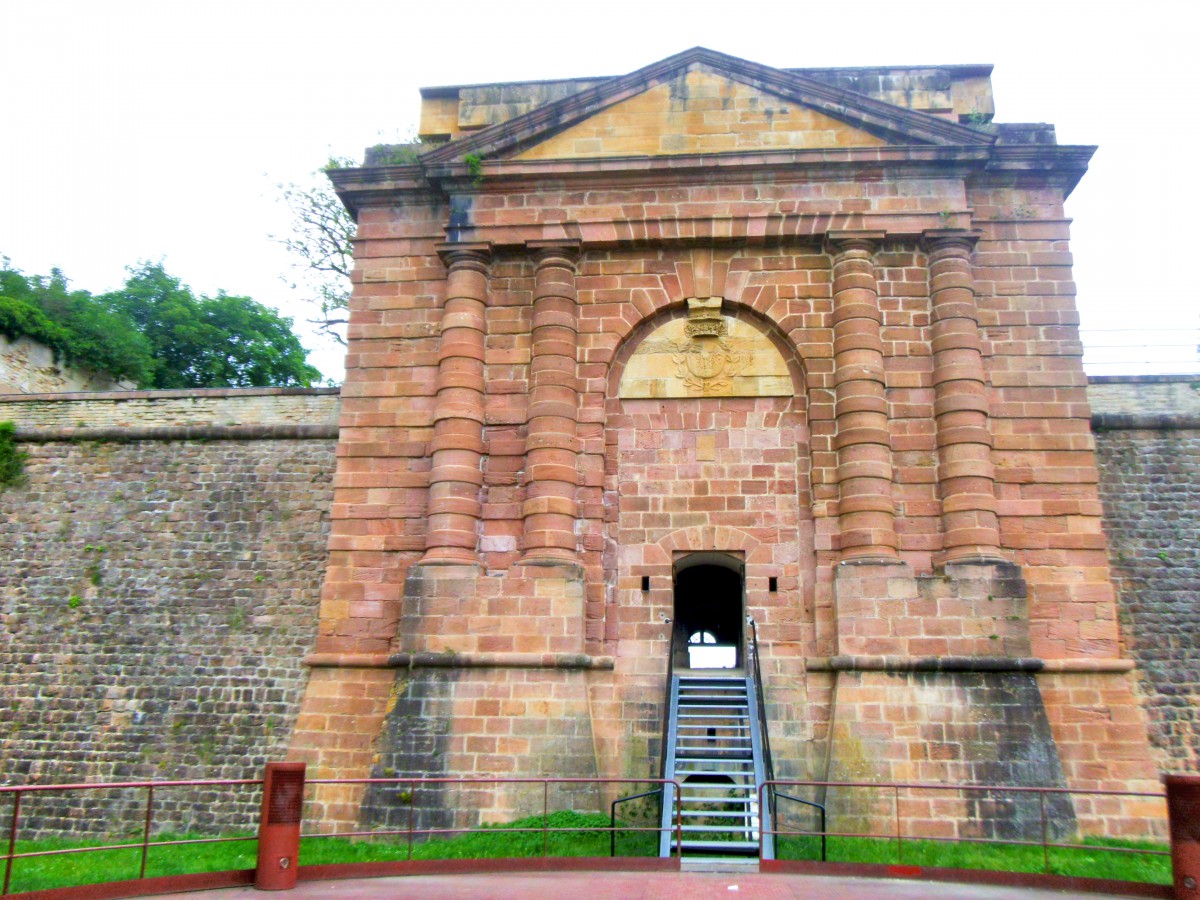
The stronghold is considered the culmination of Vauban’s work in terms of military architecture. Judge for yourself: fortifications in the shape of a 16-pointed star, ditches, a security wall, eight bastioned towers, half-moons and reduced half-moons…
Christmas markets around Colmar
This article would not be complete without mentioning the Alsatian Christmas markets. Because within a 15 km radius of Colmar, there are some of the most beautiful Christmas markets.
Some are permanent (i.e. they are open every day of Advent), and others are punctual (they only open on weekends or on certain days in December).
Some of my favourite Christmas markets are:
Colmar Christmas market
One of the most visited in Alsace. It is spread over several sites throughout Old Colmar.
Discover the Colmar Christmas market on the blog…

Eguisheim Christmas Market
Perhaps the smallest on the list, but oh so picturesque. The Christmas lights and decorations contribute to the enhancement of the heritage.
Discover the Eguisheim Christmas market on the blog…
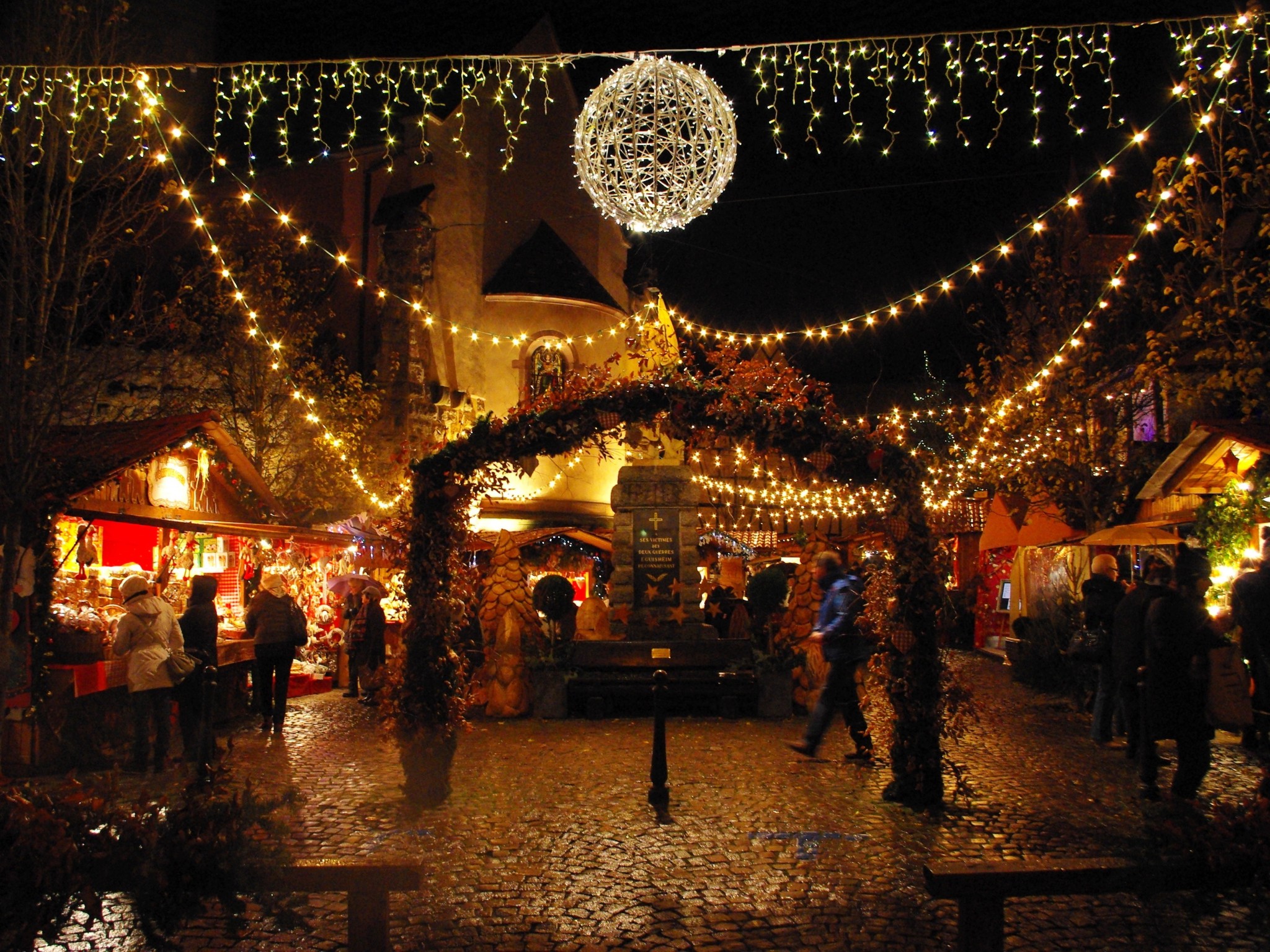
Christmas market in Kaysersberg
One of the oldest in Alsace. Its first edition dates back to 1986, at a time when the Strasbourg market was one of the only ones in France. This Christmas market is resolutely traditional and authentic in the products it offers.
Discover the Kaysersberg Christmas market on the blog…
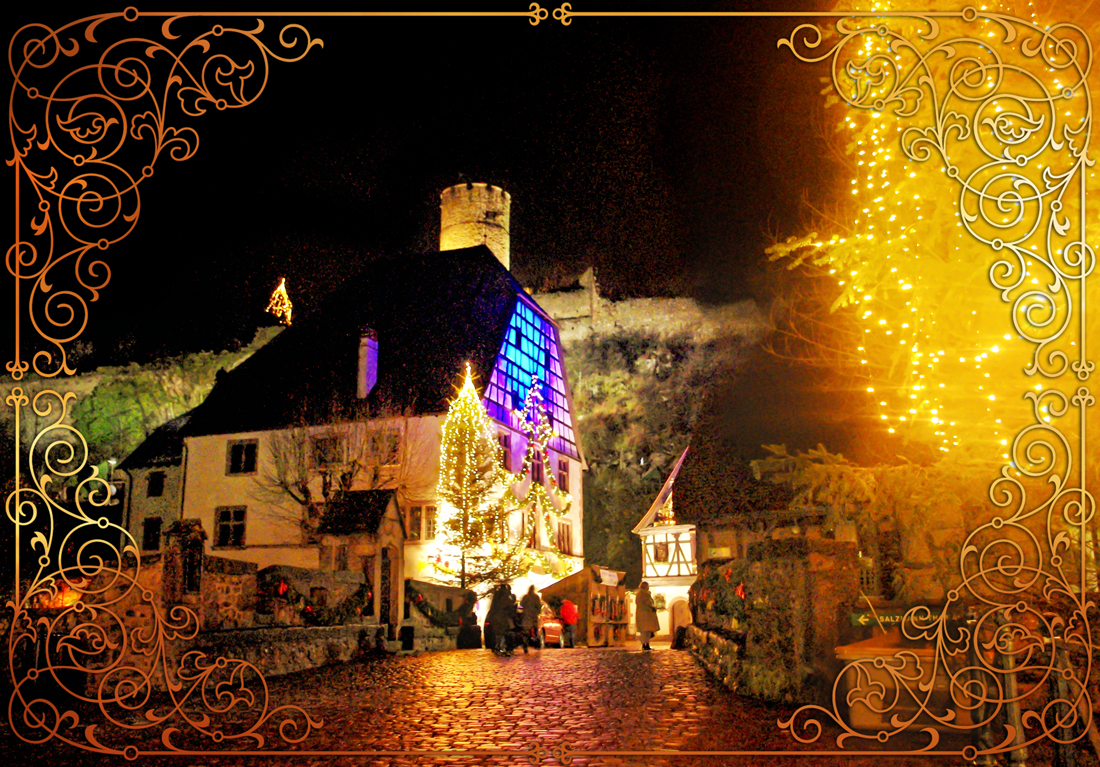
Riquewihr Christmas Market
A fairytale setting for this popular Christmas market. During the Advent weekends, the Christmas market spreads over the main street.
Discover the Riquewihr Christmas market on the blog…
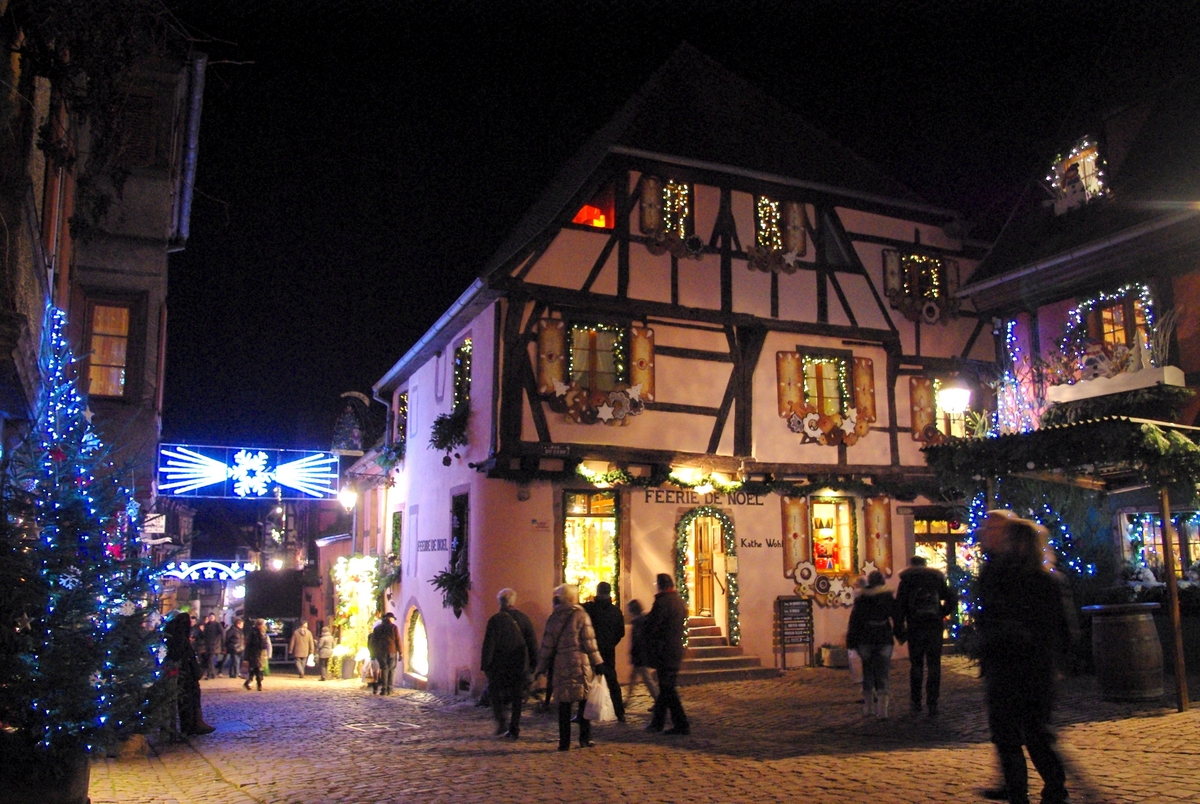
More info for your Alsace trip
There is so much to see around Colmar that you may need a whole full week to explore only part of the region!
Here is some helpful info to help you prepare for your stay in Alsace.
Where to sleep in Colmar?
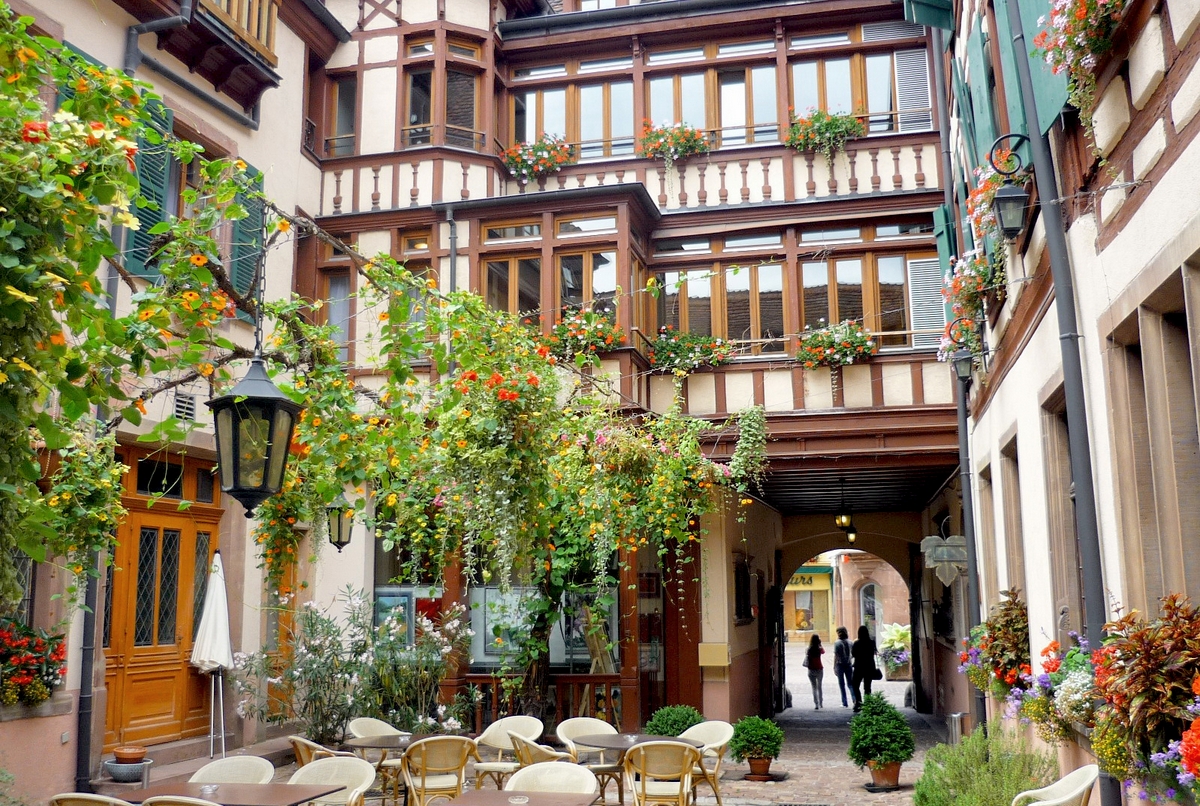
Here are some ideas for accommodation to plan your stay in the Capital of Alsace Wines.
Click here to access the list of hotels, bed and breakfasts, gites, campsites and other accommodations. Or browse the map below to find your accommodation.
Things to do in Colmar and the surroundings
A selection of activities and tours in the Alsace region:
On the blog and other websites
- Find out more about the Alsace Wine Route on the blog
- 🇫🇷 Read this article in French / Lisez cet article en français
- 🇩🇪 Read this article in German / Lesen Sie diesen Artikel auf Deutsch
- Check out the website of the Tourist Board of Colmar
Pin on Pinterest
Did you like reading this article? If so, share it on Facebook and/or Twitter. You can also pin the photo below on Pinterest:
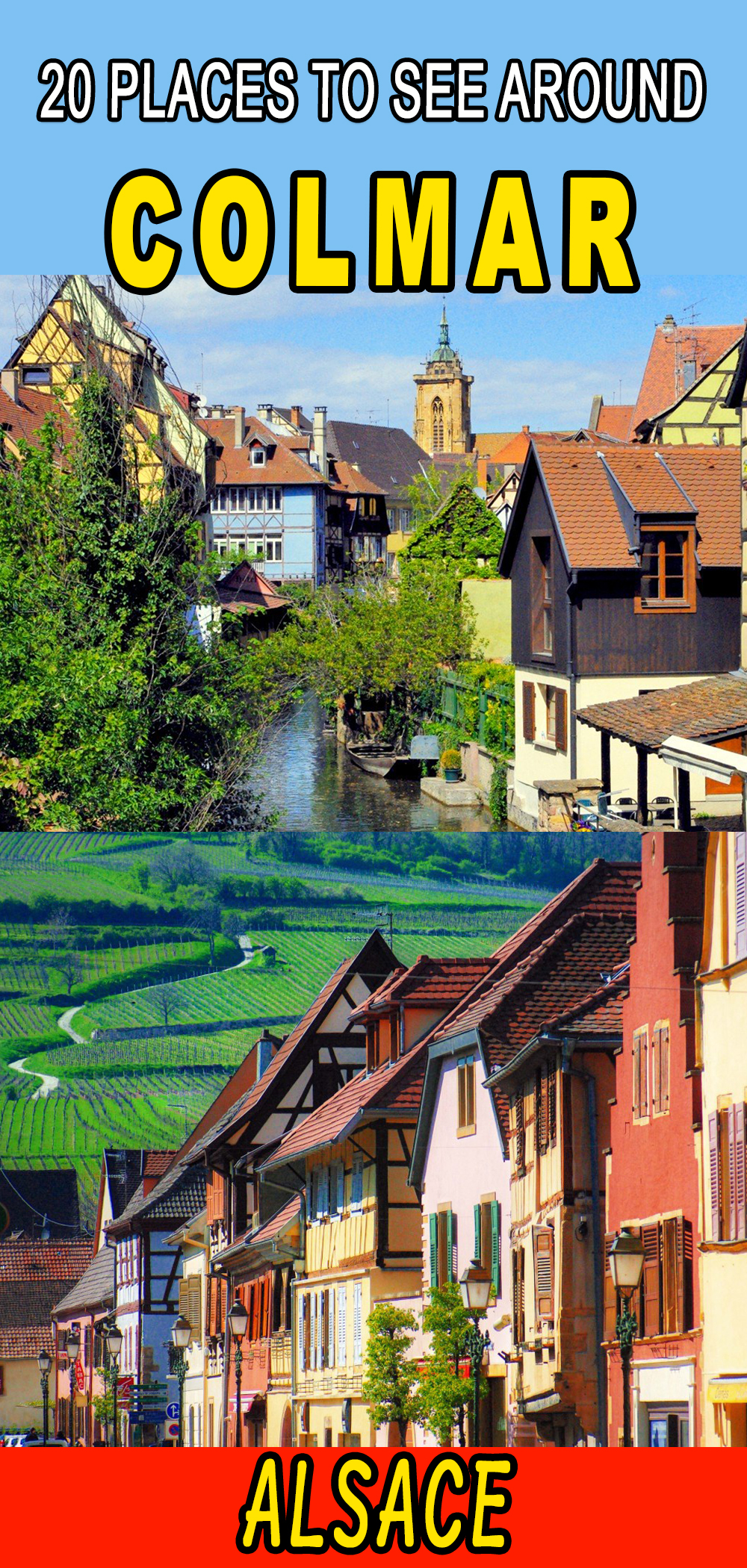

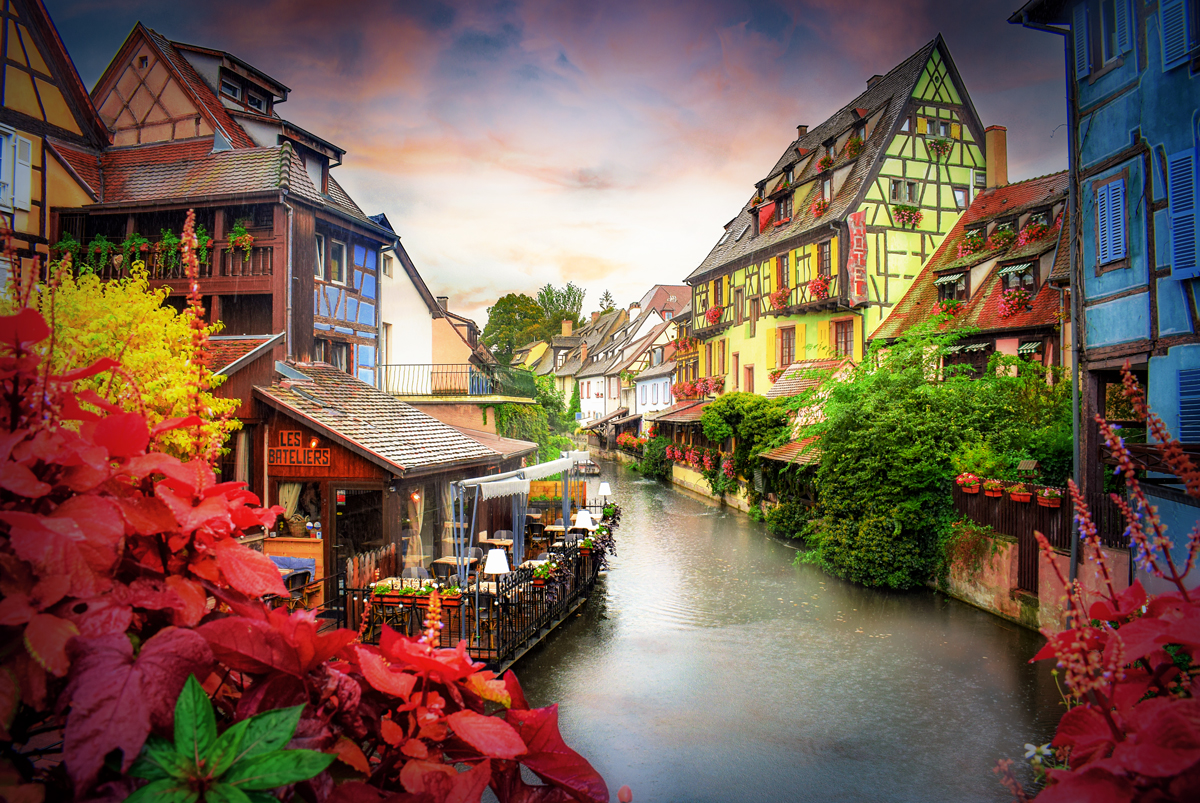



Thank you very much. Your articles are so very interesting and rewarding. We are going to spend one night in Strasbourg but it is after Christmas I’m afraid. We are also planning a week in the region in first week of June. Keep the articles coming!! Suggestions for hotels in Strasbourg?
You’re very welcome, thank you for your comment!
Even though the Christmas market of Strasbourg will be over, you’ll still be able to explore the city with the Christmas lights (the Christmas tree on Place Kleber will still be illuminated – check out my discovery guide here)
Regarding hotel recommendations in Strasbourg, it all depends on your budget and preferences (whether you want a boutique/modern/chain hotel). Here is a short list of my favourite hotels (with affiliate links). Hope this helps!
Pierre
Hotel Le Régent***** (la Petite-France)
Novotel Strasbourg Centre Halles****
Hotel Rohan Centre cathédrale****
Hotel Léonor****
Pierre,
This article is a "keeper"! My daughter and I spent four nights in an apartment on the main street of Riquewihr in October a few years ago. It was magical, especially when the day tourists left and we felt we had the village to ourselves. Fall is a perfect time to explore the charming villages and taste the wonderful wines of Alsace!
Thank you as usual for all the useful information in this article!
Thank you Ellen… can’t wait to see your photos 😉
Thank you, Pierre, for this helpful article.
My led tour groups have been in Colmar, Strasbourg, Mulhouse in several times but just make around its old town and enjoyable sparkle Christmast markets. I hope I will take my visitors to Alsac welknown wine tasting in the next few months.
Thank you again and enjoy your day.
Keep the articles coming!
You’re most welcome! 🙂
Pierre, what a delightful way to wake up on a Sunday morning! As usual, your photos are beautiful and they capture the soul and spirit of these beautiful villages and towns. Your article proves that we could spend weeks in Alsace and still not see everything that this beautiful region offers. Merci!
Avec grand plaisir, merci beaucoup Ellen ! 🙂